New requirements for Americans traveling to Europe postponed until 2025
Visitors who now travel visa-free will need to get approval prior to departure.
Americans eyed upcoming travel to European destinations slightly differently due to news of a requirement that was set to start in 2024 for U.S. passport holders. But now, EU officials have postponed the European Travel Information and Authorisation System ( ETIAS ) launch until spring of 2025.
SchengenVisaInfo.com, a website dedicated to the world's largest visa-free zone where 27 European countries abolished their internal borders known as the Schengen Area, first reported that an EU official confirmed ETIAS won't go live until May 2025, "due to continued delays with the introduction of the related Entry-Exit System (EES), which needs to be operational before ETIAS can be implemented."
An official for the European Union did not immediately respond to ABC News' request for comment.

What to know about ETIAS for US travelers
If you previously traveled to Europe without a visa, you will now need to apply for authorization through the ETIAS , before visiting.

Today, American travelers have visa-free access to 184 global destinations, according to the Henley Passport Index . And while the U.S. passport is currently ranked eighth-most powerful passport to own, that could be set to shift when the European Union adds its new documentation requirements for U.S. visitors.
The application form, which will be available on the official ETIAS website as well as a mobile application, has a fee of 7 euros or $7.79 U.S. dollars. All communication is done by email.
Once you are approved for travel, the authorization entitles visitors to stay in European countries that require ETIAS for up to 90 days within any 180-day period and travelers must be in possession of a valid ETIAS during their entire stay.
MORE: New warning issued for rebooking air travel after delays, cancellations
According to ETIAS, most applications should be processed within minutes, but in case an application takes longer, decisions will be sent within four days or up to 14 days if the applicant is asked to provide additional documentation.
The European Union encourages travelers to apply for an ETIAS authorization "well in advance of your planned journey."
Related Stories

Total solar eclipse: Best US cities for viewing

Elderly American tourist killed in elephant attack
- Apr 4, 9:43 AM

Kate Middleton diagnosed with cancer
- Mar 22, 4:44 PM
Confirmation of application submission will be sent on email with a unique number that is needed for future reference.

Upon receiving ETIAS travel authorization, travelers are to ensure that their name, passport number and other information is correct because any mistake will prevent them from crossing the border.
If an application is refused, the email will include the reasons for the decision along with information about how to appeal.
ETIAS travel authorization is valid for three years, according to the EU, or until the travel document you used in your application expires, whichever comes first.
MORE: European heat wave breaking records with little relief in sight
The ETIAS authorization is linked to a person's travel document -- such as a U.S. passport -- and both documents will be needed to board a flight, bus or ship to enter any of the European countries that require ETIAS.
Similar to international border requirements with a passport, the ETIAS authorization doesn't guarantee automatic right of entry. "Border guards will verify that you meet the entry conditions" and anyone who does not meet the conditions "will be refused entry," according to the EU.
Click here to learn more about the process from the European Union.
An earlier version of this story was originally published on July 21, 2023.
Related Topics

Why April’s total solar eclipse will be historic
- Apr 4, 10:23 AM

Trump not immune from NY prosecution, judge rules
- Apr 3, 5:14 PM
Welcome page

System for registering non-EU nationals travelling for a short stay in 29 European countries (starting in the second half of 2024)

Travel authorisation for visa-exempt travellers to enter 30 European countries (starting in mid-2025)
Share this page
- Skip to main content
- Keyboard shortcuts for audio player
Wait, do you need a visa to go to Europe now? The new ETIAS requirements, explained
Emily Olson

St. Mark's basilica in Venice is one place U.S. passport holders may not be able to get to without approval under the new ETIAS requirements Andrea Pattaro/AFP via Getty Images hide caption
St. Mark's basilica in Venice is one place U.S. passport holders may not be able to get to without approval under the new ETIAS requirements
Already thinking about next summer's vacation plans? If Europe is on your short list, there could be one extra step to take before boarding that plane.
Starting in 2024, American passport holders traveling to 30 European countries will need authorization via the European Travel Information and Authorization System (ETIAS).
Though it may sound complicated, the ETIAS and the reasoning behind it are quite similar to existing travel requirements and reflect increasing fear of terrorism in the U.S., Europe and around the world.
Here's what you need to know.
What is ETIAS? Is it a visa?
While some media outlets are taking a cue from the European Union's travel site and calling this a visa, in truth, ETIAS is more like a travel authorization form.

Summer air travel could be expensive and chaotic. Here's how to avoid trouble
"It's definitely not a visa," said Dan Hamilton, a senior non-resident fellow for foreign policy at the Brookings Institution. "It's an electronic entry-point, an authorization for countries that are currently visa-free."
Even the European Commission has said as much (and in bold letters) , writing this is "not a visa" but rather an "automated IT system" in a press release on the discussions around it back in 2018.
Whatever you want to call it, the ETIAS form is not what you'd seek if you're trying to work or live in Europe, but rather what you'll need for short-term trips — up to 90 days within any 180-day period.
Why is it being implemented?
These new requirements have been years in the making, stemming back to a rise in terrorism fears following 9/11. It's very similar to the Electronic System for Travel Authorization — or ESTA — program that the U.S. implemented in 2008 .
At the heart of ETIAS is an electronic database system to better track who's coming and going. According to the EU's latest report on terrorism data , EU law enforcement authorities arrested about 388 suspects for terror-related offenses in 2021, more than half of whom were accused of being associated with Jihadist groups based abroad.
The European Commission says ETIAS may have the added impact of cutting down on "irregular migration" (i.e. illegal immigration), but one thing the form is definitely not aimed to do is deter tourism in general.

'Revenge travel' is surging. Here's what you need to know
Crowded cities, inflated airfare and extreme heat disasters may all be making headlines this summer, but many of these European countries are still depending on tourism revenue to help them bounce back from pandemic slumps, Hamilton said.
And the pandemic is another one of the many reasons this new requirement has been delayed by decades — there was no need for ETIAS when countries closed their borders to all travel amid fears of spreading COVID-19.
"Another part of it is simply the pace of the way this parliament and European commission works," Hamilton explained in an interview with NPR. "They're ending their term and pushing through a lot of these directives because parliamentary elections happen next June."
"And getting 30 countries to agree on anything takes a long time," he added.
When does it take effect?
The European Union's website says the new authorization will start in 2024 but hasn't clarified a specific date. A press spokesperson for the union's travel arm did not respond to NPR's request for information.
And, similarly, a spokesperson for the State Department told NPR that the U.S. government website for international travel (travel.state.gov) would be updated "once the regulation goes into effect," but didn't specify when that would be.
"Frankly, I'd be surprised if this starts on time," Hamilton said. The rollout of ETIAS has already been delayed at least once.
But it couldn't hurt to plan ahead for any 2024 travel just to be safe.
Who needs to apply for ETIAS approval?
Basically, all passport holders from 60 countries who can currently travel to most European destinations without a visa — and that includes American passport holders — will now need to get ETIAS authorization for the same trip. That's about 1.4 billion people, by the European Union's estimation.
There are 30 European countries in total on the impacted destination list , including those in the "Schengen Area" — 27 European countries, many that are part of the European Union, that agreed to ease border restrictions to facilitate the movement of people within Europe.

Planning a trip? Here's how to pack like a pro
Those Schengen countries include top vacation spots like France, Italy and Spain.
The other three countries on the list are Romania, Bulgaria and Cyprus, which are all trying to become a part of the Schengen Area soon.
You can check the full list of both impacted passport holders and affected European destinations here.
How can you apply for ETIAS approval (and does it cost money)?
The application isn't open yet, but the European Union says that when it is, all necessary forms can be filled out via a web portal or mobile phone application.
You'll be asked to share personal information such as your date of birth, parents' names and details about your current occupation and previous criminal convictions. You'll also need to share a passport that is not set to expire in less than three months.
Oh, and you'll have to pay a fee of 7 euros (about $8).
When is the right time to apply?
If you want to play it safe, apply well in advance of your trip — no later than a month out.
ETIAS says most applications "are processed within minutes" and decisions are delivered within four days. But that wait could take up to 14 days if you are requested to supply additional information and up to 30 days if you're invited to interview.

It's Been a Minute
Presenting 'life kit': making the most of travel and your time off.
Those denied an application can appeal, but that process could be even lengthier.
The European Union says ETIAS approval will stay valid for three years or until the passport you used in your application expires.
Naturally, you'll also need to follow the ETIAS rules to stay in good standing.
Those with ETIAS approval can stay in the European countries on the list for up to 90 days within any 180-day period. So you can leave and come back, but you can't stay in the confines of the countries on the list for 91 days or more non-stop.
What happens if I don't apply for this and try to travel to Europe?
Your ETIAS approval will be linked to your passport. So without it, airport security (or cruise, bus or train line staff) won't let you board.
In other words, you can kiss that dream vacation goodbye.
- European Commission
- Europe travel
- European Union
France, Spain: European Union countries tightening COVID-19 restrictions for US tourists
The list of restrictions for people traveling from the United States to Europe is growing as European Union members implement new rules amid the COVID-19 pandemic.
EU countries including France, Spain, Denmark, Italy and Norway are tightening restrictions for tourists traveling from the U.S. in the wake of the European Union's removal of the country from its safe travel list and as COVID cases continue to rise stateside.
The EU's August move signaled to member states that they should no longer ease restrictions on nonessential travel for people from the U.S. amid the latest surge in COVID-19 cases. The U.S. was added initially to the EU's safe travel list in June .
►At-home COVID-19 tests: Here's what travelers should know
►Can Americans visit Europe this fall?: It's complicated. What travelers need to know.
Learn more: Best travel insurance
France only welcoming vaccinated U.S. tourists
Beginning Sept. 12, only vaccinated visitors will be allowed to visit for vacation , the French embassy confirmed Friday. Non-vaccinated travelers can only visit for essential reasons and need a negative COVID-19 test as well as must isolate for seven days upon arrival.
Spain requiring proof of vaccination
Spain began requiring proof of vaccination from travelers coming from the U.S. starting Sept 6. U.S. citizens can enter Spain for non-essential tourism by showing proof of vaccine, according to the U.S. Embassy and Consulate in Spain and Andorra .
"Additionally, U.S. citizens traveling from the United States to Spain must present upon arrival in Spain a QR code generated through the Spain Travel Health portal, obtained through the website or by downloading the 'SpTH app' in Google Play Store or iTunes App Store for each traveler, regardless of their age," the Embassy said on its website.
The rule applies to all coming from the U.S., even if they stopped in a third-party country before entering Spain.
Denmark bans unvaccinated tourists from the U.S.
Denmark is banning unvaccinated tourists from the U.S. The change came after the country moved the U.S. to its "orange" travel advisory category on Sept. 4. Previously, U.S. tourists could enter Denmark by showing a negative coronavirus test or proof of recovery.
Some unvaccinated people from the U.S. can still enter Denmark with proof of a negative COVID-19 test but will need to have "a worthy purpose" such as work, school or legal matters, according to a joint website of the Danish authorities. Unvaccinated travelers permitted to enter will be required to quarantine.
Entry requirements do not change for fully vaccinated U.S. travelers, who are still exempt from testing and quarantine requirements.
Bulgaria moved U.S. to its 'red zone'
Bulgaria announced earlier this month it would move the U.S. into its "red zone" and prohibit travel from the United States, regardless of vaccination status, as the country faces its fourth surge of COVID-19.
Italy added testing, isolation requirements
Italy added testing and self-isolation requirements for American travelers at the end of August after the EU removed the U.S. from its safe travel list.
Though the most dramatic policy changes affect unvaccinated travelers – who are still welcome to enter the country, so long as they take the time to self-isolate – vaccinated travelers will have to jump through additional hoops of new testing requirements. Travelers can offer proof of vaccination through a paper card with a CDC logo.
Sweden barring travelers from the U.S.
Sweden announced Sept. 2 that travelers from the U.S. would be barred from entering the country regardless of vaccination status starting Sept. 6, amending its travel entry ban.
"Effective September 6, Sweden has removed the United States from its list of countries whose residents are exempted from its entry ban," the U.S. Embassy in Sweden said on its website. "U.S. citizens who reside in an exempted country are still exempt from the entry ban."
Norway not allowing U.S. citizens unless visiting family
Norway has also blocked U.S. citizens from entering with one exception: Family.
"Unless the traveler qualifies for a travel exception such as close family members and persons in an established relationship with a resident of Norway," the U.S. Embassy in Norway said on its website .
Belgium requiring COVID vaccine proof
U.S. residents must be able to show proof of vaccination to enter Belgium on non-essential travel.
"U.S. residents may travel from the United States to Belgium without an Essential Travel Certificate if they can present a valid vaccination certificate," the U.S. Embassy in Belgium said on its website. "Travelers from the United States who cannot present a valid vaccination certificate will not be permitted to travel to Belgium for non-essential reasons unless they hold an EU citizenship or residency."
The Netherlands has added testing requirements
The Netherlands began considering the U.S. to be "a very high-risk area" Sept. 4, the U.S. Embassy and Consulate in the Netherlands said on its website.
Travelers are allowed to enter if they are fully vaccinated and comply with a mandatory quarantine (unless they "meet the criteria for an exemption").
"As of September 6, 2021, such travelers also must present a negative COVID-19 PCR test OR a negative antigen test performed within 24 hours prior to departure for entry to the Netherlands," the embassy continued. "Even travelers who are exempt from the testing and quarantine requirements must complete a quarantine declaration."
Germany added the U.S. to its 'high-risk' areas
Germany added the United States to its "high-risk" area list in mid-August, before the EU's announcement.
Since Aug. 15, travelers who recently spent time in the U.S. need to be fully vaccinated or demonstrate an "important reason" for entering. Those who are unvaccinated or unable to show proof of recovery will need to self-isolate for 10 days upon arrival. The quarantine period can end on the fifth day with proof of a negative coronavirus test.
Contributing: Dawn Gilbertson, USA TODAY
NATIONAL PARKS IN EUROPE
Sustainable travel in europe, europe invites the curious.
We use cookies and Inspectlet. By using this website, you accept the use of cookies which helps us provide you more interesting and adapted content.
The Official Travel Portal of Europe
Experience europe through our stories, discover europe by your interests, arts & culture, discover europe.
- Netherlands
- Switzerland
- United Kingdom
Adriatic Coast
Atlantic coast, balkan peninsula, baltic states, carpathians, central europe, iberian peninsula, islands & archipelagos, mediterranean.
- Outermost Regions
Rhine Valley
- Czech-Republic

National Parks in Europe

Key European festivals: Ireland and Spain

National parks in Finland

Stay in nature in the Netherlands

The green soul of Montenegro

Into Wild Slovakia

Connect with nature in Greece

Latvia's hidden treasures
Tips to plan your travel to europe, your guide to passenger rights while traveling in europe, your complete guide to planning your daily life in europe, the ultimate guide to european currencies, what you need to enter europe, want to know more about europe.
Sign up to our newsletter here:
This site is protected by reCAPTCHA and the Google Privacy Policy and Terms of Service apply.
Situation in Haiti March 29, 2024
U.s. citizens in haiti, update january 10, 2024, information for u.s. citizens in the middle east.
- Travel Advisories |
- Contact Us |
- MyTravelGov |
Find U.S. Embassies & Consulates
Travel.state.gov, congressional liaison, special issuance agency, u.s. passports, international travel, intercountry adoption, international parental child abduction, records and authentications, popular links, travel advisories, mytravelgov, stay connected, legal resources, legal information, info for u.s. law enforcement, replace or certify documents, before you go.
Learn About Your Destination
While Abroad
Emergencies
Share this page:
Traveler's Checklist
Safety and Security Messaging
Best Practices for Traveler Safety
Staying Connected
Smart Traveler Enrollment Program (STEP)
Traveler Information
LGBTQI+ Travelers
Adventure Travel
High-Risk Area Travelers
Travelers with Dual Nationality
Journalist Travelers
Faith-Based Travelers
Pilgrimage Travelers (Hajj and Umrah)
U.S. Students Abroad
Cruise Ship Passengers
Women Travelers
Travelers with Disabilities
Older Travelers
U.S. Volunteers Abroad
Travelers with Pets
Travelers With Firearms
Travel Agents
Travel Safety - Race and Ethnicity
U.S. Travelers in Europe's Schengen Area
Crisis and Disaster Abroad: Be Ready
What the Department of State Can and Can't Do in a Crisis
Information for U.S. Citizens about a U.S. Government-Assisted Evacuation
Your Health Abroad
Insurance Coverage Overseas
Driving and Road Safety Abroad
Customs and Import Restrictions
Information for U.S. Citizens in Russia – Travel Options Out of Russia
Lodging Safety
In Europe's Schengen area , your passport must be valid for at least six months at the time of your entry. At present, the Schengen area includes most European Union (EU) countries, except for Cyprus and Ireland.
If you are transiting through Canada or the United Kingdom (UK) enroute to the Schengen area : your passport must be valid for at least six months, even though Canada and the UK do not themselves have the six-month rule. If your passport will expire within six months, airlines may not let you board your onward flight to Europe.
Traveling in Europe
If you plan to travel in Europe, you need to know about the Schengen Borders Agreement, which allows you to move freely within a number of countries without border checks. Tourists, exchange students, and people visiting for business from certain countries, like the United States, can travel in the Schengen area for up to 90 days. The Schengen area includes most EU countries, except for Cyprus and Ireland. It also includes four non-EU countries: Iceland, Norway, Switzerland, and Liechtenstein.
Before you travel to the Schengen area, we recommend you do the following:
- Check the expiration date on your passport book carefully before traveling to Europe. Ensure your passport book is valid for at least six months when you enter the Schengen area. This is especially important for minors under age 16 as their passports are only valid for five years. In contrast, U.S. citizen adults aged 16 and older receive passports that are valid for 10 years.
- Always carry your passport book with you when traveling to another country in the Schengen area. Even if there is no border check at that time, officials may reinstate border controls without notice.
- Be prepared to explain your purpose of travel.
- Be prepared to provide proof of sufficient financial resources for the visit.
- Comply with other entry requirements for each country you will visit or transit.
On our Country Information pages , you can find passport validity requirements and other important information for your destination country. If your passport does not meet the Schengen requirements, you may be:
- Refused boarding by the airline at your point of origin or while transferring planes.
- Denied entry when you arrive in the Schengen area, regardless of how long you will stay.
An immigration official will determine if you qualify for visa-free entry to the Schengen area when you first cross any external Schengen border. You will have to present your passport at that time. The officer may deny your entry if you do not qualify.
You should also check passport validity requirements if traveling onward from the Schengen area to a country outside the Schengen area. You can find this information in our Country Information pages.
HOW LONG CAN I REMAIN?
- With a valid U.S. passport book, you can stay up to 90 days in the Schengen area for tourism or business during any 180-day period. You must wait an additional 90 days before applying to re-enter the Schengen area.
- If you plan to stay in the Schengen area longer than three months, contact the embassy of the country where you plan to spend the majority of your time and apply for a visa.
Countries in the Schengen area may reinstate temporary internal or external border control without notice. U.S. citizens should carry their U.S. passport book at all times when entering or leaving the Schengen area. They should also bring it when traveling between Schengen countries.
How can the U.S. government help me if border officials do not let me enter?
- We can give you the contact information of foreign embassies of the countries you wish to visit.
- We can provide information about hiring an English-speaking foreign attorney overseas if you choose to do so.
- Note: We cannot influence a foreign government’s decision about allowing you to enter. We cannot intervene in another country’s criminal or administrative procedures.
What countries are members of the Schengen Borders Agreement?
Click on the country name for more information.
Bulgaria (entering in March 2024)
Czech Republic
Liechtenstein
Netherlands
Romania (entering in March 2024)
Switzerland
Enroll in STEP

Subscribe to get up-to-date safety and security information and help us reach you in an emergency abroad.
Recommended Web Browsers: Microsoft Edge or Google Chrome.
Learn about your destination
Make two copies of all of your travel documents in case of emergency, and leave one with a trusted friend or relative.
External Link
You are about to leave travel.state.gov for an external website that is not maintained by the U.S. Department of State.
Links to external websites are provided as a convenience and should not be construed as an endorsement by the U.S. Department of State of the views or products contained therein. If you wish to remain on travel.state.gov, click the "cancel" message.
You are about to visit:
Surf and Sunshine
Travel focused lifestyle blog featuring recipe, family and garden content
Travel to Europe from US: 9 Essential Tips to Enhance Your European Adventure
Traveling to Europe from the US is a dream come true for many adventure seekers. The continent is renowned for its rich history, stunning landscapes, diverse cultures, and vibrant cities. In this article, we’ll cover several essential tips to enhance your European adventure and make the most of your journey.
From saving for a vacation , planning your trip and packing smart to embracing local customs, managing your finances, and staying safe, these tips will help both new travelers or well seasoned wanderers navigate the complexities of traveling in European Union countries with ease.
We’ll guide you on immersing yourself in the local culture, exploring the countries beyond the tourist attractions, sampling the country with mouthwatering cuisine, and capturing memories that will last a lifetime.
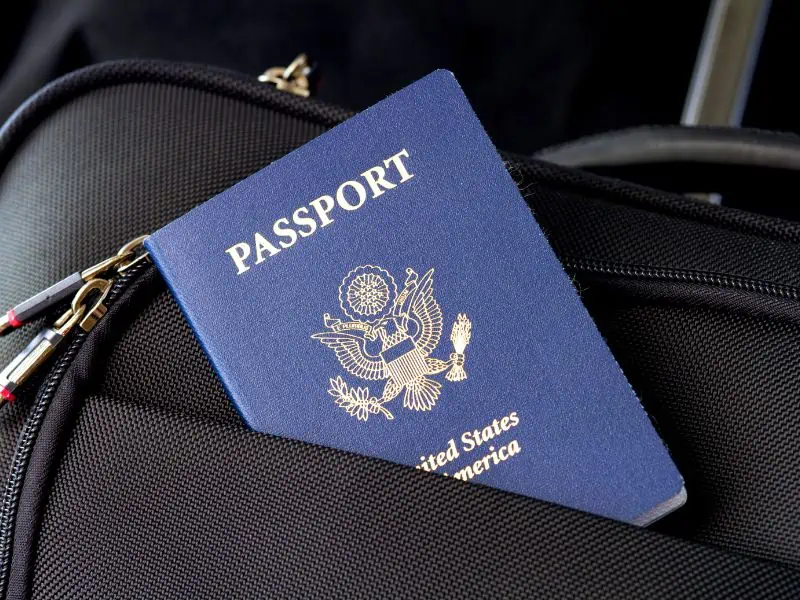
Tip 1: Plan Ahead and Research
To make the most of your trip to Europe, thorough planning and research are essential.
- Visa Schengen area Requirements : Check the visa entry requirements for the many countries you plan to visit Europe and ensure you have the necessary documentation well in advance.
- Travel Restrictions: Stay updated on any travel restrictions, entry requirements, or COVID-19 protocols that may be in place. Check government websites and consult with travel agencies for the latest European travel information.
- Destination Research: Research each popular destination you plan to visit for example: Italy , Spain , Iceland , Portugal , Norway , Greece . Learn about the local culture, traditions, and customs to respect and appreciate the local way of life.
- Must-See Attractions: Identify the key attractions and landmarks you wish to visit. Make a list and prioritize your sightseeing plans to maximize your time and cover the highlights of each city or region. Personally, I don’t like to plan every aspect of my trip, but I do want a general overview of the things I may want to see and experience (like staying in a castle! ) so I can make better decisions on the ground and in the moment.
- Accommodations and Transportation: Research and book accommodations and transportation options for travelers in advance. Look for deals, compare prices, and consider the proximity to attractions and public transportation.
- Seasonal Considerations: Take into account the climate and seasonal variations of your European destinations, especially Christmastime. Pack accordingly and plan activities that align with the weather conditions.
Tip 2: Pack Smart and Light
Packing efficiently will not only save you space but also make your journey more comfortable and stress-free. (If you’re traveling abroad with kids, I have an extensive list specific to traveling with children here .)

- Clothing: Pack versatile and lightweight clothing suitable for the European weather. Opt for layers that you can mix and match. Consider the cultural norms and be sure to dress modestly when visiting religious sites.
- Comfortable Shoes: Europe often involves a fair amount of walking, oftentimes on uneven surfaces like cobblestone, so bring comfortable walking shoes or sneakers for travelers. Consider bringing a pair of dressier shoes for evenings or special occasions.
- Travel-Sized Toiletries: Purchase travel-sized toiletries or transfer your essentials into smaller containers to comply with carry-on regulations. Don’t forget items like sunscreen, hand sanitizer, and any necessary medications.
- Travel Adapters and Chargers: European countries like Italy and Germany use different plug types, so check and pack the appropriate travel adapters to charge your electronic devices. Ensure you have chargers for your phone, camera, or other gadgets you plan to bring.
- Travel Documents: Keep your travel documents organized and easily accessible. This includes your passport , identification, travel insurance, copies of important documents, and any required by countries visas or permits.
- Day Bag: Bring a small day bag or backpack for your daily excursions. It should be lightweight and comfortable to carry, with enough space for essentials like a water bottle, snacks, a camera, and a guidebook or map.
- Consider Weight Restrictions: If you plan to travel within Europe using budget airlines, be mindful of their weight restrictions for both checked and carry-on luggage. Yes, many will weigh and charge for your carry on baggage! Check flight schedules with Directflights.com . Familiarize yourself with their policies to avoid any additional charges or inconveniences.
Tip 3: Embrace Local Culture and Customs
One of the most enriching aspects of traveling to Europe is immersing yourself in the local culture. Here are some suggestions on how to embrace the culture and customs:
- Learn Basic Phrases: Familiarize yourself with a few basic phrases in the local language, such as greetings, thank you, and please. Locals appreciate the effort and it can enhance your interactions.
- Respect Local Customs: Research and understand the cultural norms and customs of the EU countries you’ll be visiting. This includes dress codes, dining etiquette, and social norms. Respect local traditions and be mindful of appropriate behavior, especially in sacred sites or religious ceremonies.
- Try Local Cuisine: Explore the local culinary scene and sample traditional dishes. Visit local markets for travelers and eateries to get an authentic taste of the region. Be adventurous and try new flavors and ingredients.
Tip 4: Manage Your Finances
Proper financial management will ensure a smooth journey without any unexpected financial hurdles.
14 Ways to Save Money on Your Next Family Vacation
- Notify Your Bank: Before your trip, inform your bank about your travel plans to avoid any issues with your credit or debit cards in EU countries. They can place a travel notification on your account to prevent any potential blocks.
- Currency Exchange: Research the currency of each country you’ll be visiting and exchange some currency before you depart. Look for reputable currency exchange locations or withdraw cash from ATMs upon arrival for better rates.
- Credit Cards: Carry at least one major credit card that has wide acceptance in Europe. Check if your card charges foreign transaction fees and consider getting a card with no or low fees to save on charges.
- Budget Wisely: Set a daily budget for expenses such as accommodations, meals, transportation, and activities. Research average costs in each destination to help you plan accordingly and avoid overspending.
Tip 5: Stay Connected and Safe
Staying connected and ensuring your safety are crucial during your European adventure.
- Communication: If you’re concerned with saving money on data charges while traveling , consider purchasing a local SIM card for your phone or activating an international roaming plan. Alternatively, rely on Wi-Fi hotspots available in cafes, hotels, and public spaces to stay connected.
- Travel Insurance : Protect yourself with insurance for travelers that covers medical emergencies, trip cancellations, and lost belongings. Carefully review the policy to ensure it suits your needs.
- Safety Precautions : Be vigilant and aware of your surroundings at all times. Avoid displaying valuable items and keep your belongings secure. Research any potential scams or tourist traps in each destination and take necessary precautions to stay safe.
Tip 6: Embrace Public Transportation
Utilizing public transportation in Europe can be cost-effective, efficient, and provide an authentic local experience.

- Trains: European countries have an extensive rail network, offering convenient connections between cities and countries. Look into rail passes or discounted tickets for flexibility and savings.
- Buses: Regional and intercity buses are another affordable option, especially for shorter distances or less popular routes.
- Metros and Trams: Many European cities have well-developed metro or tram systems, making it easy for travelers to navigate urban areas quickly and efficiently.
- Local Transportation Cards: Check if the destinations you’re visiting offer transportation cards or passes. These can provide unlimited travel on buses, trams, and metros within a certain timeframe.
Tip 7: Sample Local Cuisine
Exploring the local cuisine is an essential part of your European adventure. Immerse yourself in the culinary delights by considering this bit of advice:
- Local Markets: Visit local markets to discover fresh produce, regional specialties, and unique ingredients. Engage with vendors and sample their offerings for an authentic food experience.
- Street Food: Explore street food stalls and food trucks to taste quick and delicious local treats. From crepes in Paris to currywurst in Berlin, street food reflects the local flavors and culinary traditions.
- Traditional Restaurants: Seek out traditional restaurants serving regional dishes. Opt for establishments frequented by locals to experience authentic flavors and culinary techniques.
- Wine and Beer: Europe is renowned for its wine and beer culture. Don’t miss the opportunity to sample local wines in vineyards or visit breweries for a taste of traditional beers.
Tip 8: Explore Beyond the Tourist Hotspots
While iconic landmarks are must-see attractions, don’t limit yourself to the tourist hotspots. Some ways to discover hidden gems and lesser-known destinations:
- Off-the-Beaten-Path Towns: Venture beyond capital cities and popular tourist destinations to explore charming small towns and villages. These places offer a more intimate experience and a glimpse into local life.
- Nature Retreats: Seek out national parks , scenic coastlines, and picturesque countryside to connect with nature. Enjoy hiking trails, breathtaking landscapes, and outdoor activities away from the hustle and bustle of cities.
- Cultural Festivals: Check if there are any local festivals or cultural events taking place during your visit to Europe. These celebrations showcase traditions, music, dance, and culinary specialties unique to the region.
Tip 9: Stay Flexible and Embrace the Unexpected
While it’s essential to plan, it’s equally important to stay flexible and open to unexpected experiences.
- Serendipitous Moments: Leave room for spontaneous adventures and serendipitous encounters. Some of the most memorable experiences happen when you let go of rigid itineraries and embrace the unexpected.
- Local Recommendations: Interact with locals and fellow american travelers to gather recommendations and insights. They may suggest hidden gems or off-the-beaten-path destinations that you wouldn’t have discovered otherwise. This is how I had one of my most amazing Italian adventures EVER…on the back of a Vespa scooter with a friendly local as my guide!
Whether you’re a first-time traveler to a country in Europe or a seasoned globetrotter, these insights will provide you as travelers with valuable knowledge to enhance your experience, connect with the local communities, and create unforgettable moments. So, get ready to embark on a European adventure filled with exploration, discovery, and cultural immersion.
By following these 9 essential tips to enter Europe, you’ll be well-equipped to navigate the vibrant cities, picturesque landscapes, and centuries-old landmarks that await you in Europe. So, pack your bags, leave your worries behind, and get ready to embark on an extraordinary journey that will leave an indelible mark on your travel memories.
Bon voyage!
Leave a Comment Cancel reply
Save my name, email, and website in this browser for the next time I comment.
This site uses Akismet to reduce spam. Learn how your comment data is processed .
Europe to require new entry fee for visitors

After all the pandemic-era regulations and international travel rules, get ready for one new requirement coming for travelers to Europe in 2023. The European Travel Information and Authorization System will introduce a mandatory registration and a 7 euro (about $7.50) fee for visitors to most European countries as of May 2023. While some people have called this a "visitor tax," the stated reason for the program is improved security. According to then-European Commission President Jean-Claude Juncker when ETIAS was announced in 2016, "We need to know who is crossing our borders. This way we will know who is traveling to Europe before they even get here."
ETIAS states the system will be able to "Assist in detecting and decreasing crime and terrorism" and "Impede irregular migration." With the system, Americans and visitors from 62 other countries will still be able to travel visa-free in most European nations.
For more TPG news delivered each morning to your inbox, sign up for our daily newsletter .
What is ETIAS?

The European Travel Information and Authorization System is an electronic process to pre-screen, profile, approve and register visitors to the 26 countries of the European Schengen Zone who don't currently need a visa to enter. Similar to the U.S. Electronic System for Travel Authorization entry approval system, ETIAS will cross-check visitor information with government databases and watch lists before issuing authorization to enter. The information collected will also be used in data tracking for business and tourism purposes. ETIAS covers European countries that are part of the Schengen Zone travel agreement, in a region mostly overlapping the EU, with the addition of Iceland, Norway, Switzerland and Liechtenstein but minus Ireland. An individual's ETIAS authorization will be valid for an unlimited number of entries over three years.
Countries in the Schengen Zone to require ETIAS:
- The Czech Republic.
- Liechtenstein.
- Luxembourg.
- The Netherlands.
- Switzerland.
Who needs to apply for ETIAS?
All U.S. citizens and those from the other 62 non-EU countries that are not currently required to apply for a visa will need ETIAS authorization to enter the EU for visits of up to 90 days, including transit passengers. Only visitors who are between the ages of 18 and 70 will need to pay the application fee, but those of all ages will still need ETIAS authorization to enter. If you have applied separately for a visa to enter Europe, you will not need to complete the ETIAS application.
Related : A country-by-country guide to where you can travel without a COVID-19 test
When and where will ETIAS go into effect?
This long-planned and much-delayed system is currently targeted to be fully operational in May 2023. At that point, airlines and other transport systems will be required to check for ETIAS authorization prior to allowing passenger boarding, and visitors will be required to complete the application process prior to travel. At land borders, visitors can complete the application at an electronic kiosk.
How do you apply for ETIAS?
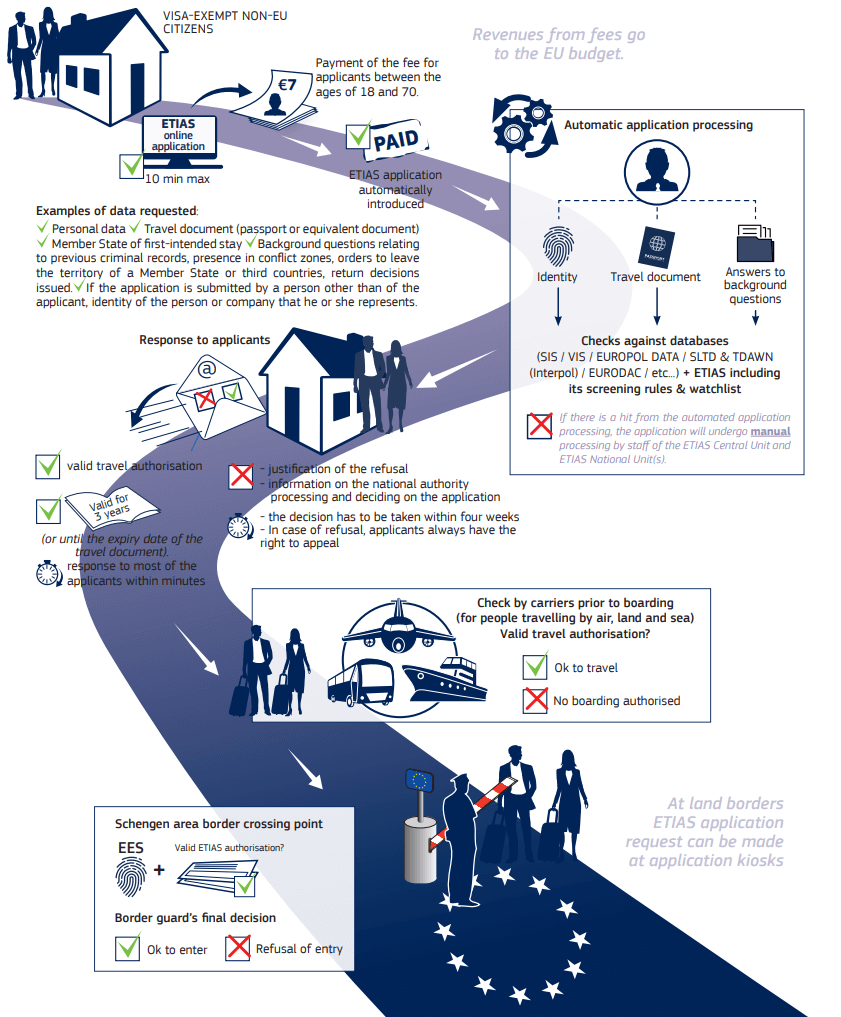
Before traveling, you'll need to access the ETIAS online application to input passport information, name, date and place of birth, an email address, phone number, and a credit or debit card to submit the payment fee. You'll also need to provide your destination, as well as answer a few background and profile questions. The ETIAS website indicates the form should take about 10 minutes to complete.
Approval for most applicants should take only a matter of minutes. However, if an item is flagged in the application, a manual review must take place. The applicant can then either correct the improperly entered information or appeal a denial decision.
Bottom line
No immediate action needs to be taken by U.S. citizens planning to visit Europe. However, be prepared for the May 2023 launch when you must go through one more step and pay one more fee in the traveling process as part of the ETIAS implementation. Stay tuned to The Points Guy for further developments related to this program.
ETIAS Visa Waiver for Americans
Europe's travel authorization for u.s. citizens.
This website does not belong to, nor is it affiliated with, the EU. The official website of the European Union is europa.eu.
US passport holders will soon need ETIAS to travel to Europe. The European Travel Information and Authorisation System will be operational from 2025.
ETIAS is the new travel permit for Americans and other visa-exempt non-EU citizens visiting European destinations such as France , Italy, and Spain.
U.S. nationals can continue to go to Europe visa-free for short stays by applying for ETIAS .

Do Americans need a visa for Europe?
Americans who meet the ETIAS requirements do not need a visa for Europe. This means that US passport holders can travel to Europe without a visa:
- For up to 90 days in any 180-day period
- For tourism, business, and short-term study
Visa-free American visitors need to apply for ETIAS .
Americans must hold a visa or residence permit to stay longer than 3 months or to work in Europe.
WHAT DO AMERICANS NEED TO VISIT EUROPE?
This is what Americans need to visit Europe for up to 90 days:
- Passport valid for 3 months after exiting the Schengen Area
- ETIAS from 2025
You can find out how to apply for your ETIAS to travel from the US to Europe below.
If you’re staying for longer than 90 days, check the specific requirements for your European destination.
Do American tourists need medical insurance for Europe?
Medical insurance is not an ETIAS requirement . You do not need to provide proof of health insurance to apply.
However, all American travellers are advised to take out insurance that covers medical emergencies and other travel-related incidents.
US citizens need ETIAS for these European countries
Currently, there are 25 european countries that form part of the schengen area:.
- Czech Republic
- Netherlands
- EU Schengen
- Non-EU Schengen States
Non-Schengen EU States
Non-eu member states:.
- Liechtenstein
- Switzerland
Micro-States de facto part of Schengen Area:
- Vatican City
HOW CAN AMERICANS APPLY FOR ETIAS TO VISIT EUROPE?
As an American, you can apply for ETIAS online. Fill out the electronic form, pay the fees, and submit the application.
You’ll be asked to provide the following information on your application form:
- Name and surname
- Nationality
- Date, place, and country of birth
- Current address
- Contact phone number
- Email address
- Passport number
- Passport issue/expiry date
- Criminal records
- Travel to conflict areas
Why do Americans need ETIAS to travel to Europe?
Americans need ETIAS because they are visa-exempt non-EU citizens . The ETIAS regulation applies to third-country nationals who do not need a visa to enter the Schengen Area. Other eligible nationalities include British, Australian , and Japanese.
ETIAS pre-screens travellers before they arrive in Europe . By identifying potential threats, ETIAS improves the security of the Schengen Area.
How will my information be used by ETIAS?
The information provided on an ETIAS application form is checked against security databases. These include 3 systems managed by eu-Lisa :
- Schengen Information System (SIS) — database to identify suspected criminals, missing persons and stolen objects.
- Visa Information System (VIS) —database to share visa information
- Eurodac —database storing fingerprints of asylum seekers and irregular migrants
If there is an alert in the system, European authorities know to review the application manually. A decision can then be made on whether to grant travel authorisation.
Is my ETIAS information kept secure?
Information provided on ETIAS applications can only be accessed by authorised users. In addition, advanced technology is used to protect data and prevent any unauthorised access.
ETIAS data protection is in line with European law and the Charter of Fundamental Rights.
When do Americans need to apply for ETIAS?
Americans need to apply for ETIAS for any trips to Europe after 2025.
After the first ETIAS has been issued, US citizens need to apply in 3 years' time or when their passport expires (whichever is sooner). ETIAS is valid with the passport used to apply only.
Americans planning to visit several European countries on one trip do not need to apply for different visa waivers. ETIAS is valid across the Schengen Area.
TRAVELLING TO EUROPE FROM THE US WITH ETIAS
It is also important to note that an approved ETIAS for American citizens does not guarantee entry to Europe; it grants the holder permission to travel to Schengen countries.
The final decision for entry will be made by an immigration officer at Schengen border control. You do not need to print your ETIAS—it is linked to the passport—but you must travel with the passport you used to apply.
There are regulations and restrictions on carrying weapons, importing and exporting large quantities of tobacco, alcohol or perfume, and declaring large amounts of currency when travelling from the USA to Europe. Travellers must check the latest immigration rules.
US and Europe VISA WAIVER BILATERAL AGREEMENTS
US citizens may be able to stay in some European countries beyond the 90-day Schengen limit . The United States has bilateral visa-waiver agreements with several countries.
The Schengen Area nations that have bilateral visa-waiver reciprocal agreements with the US are listed below. The maximum stay is also shown.
- Belgium (3 months)
- Denmark (3 months)
- Italy (3 months)
- Hungary (90 days)*
- Portugal (60 days)*
- Spain (90 days)*
- France (90 days)
- Latvia (90 days in half a year)*
- The Netherlands (90 days)*
Schengen-associated country with a bilateral agreement:
- Norway (90 days)
*Only ordinary passports are permitted
US passport holders who take advantage of one of these visa waiver bilateral agreements must exit the Schengen Area from that EU nation. On departure, they must fly directly to a third country or transit in a non-Schengen airport.
In addition, travellers must remain in that particular EU Member State. It is not possible to move freely around Europe under the bilateral agreements.
Bilateral agreements between the United States and European Union Member States are subject to change.
EUROPE VISA REQUIREMENTS FOR US CITIZENS
US citizens who do not meet the ETIAS requirements need a visa for Europe. Visa applicants need to make an appointment at the embassy or consulate of their European destinations.
Documentation requirements depend on the type of visa requested but may include:
- accommodation bookings
- Round trip flight tickets , or tickets to an onward destination
- Proof of sufficient financial means to cover the stay in Europe
- Travel insurance that covers medical care in the Schengen Area
- A recent, passport-sized, photograph
Visa applications should be started several weeks before the intended travel date.

ETIAS for Americans - Related News

ETIAS Europe: the EU’s version of the US ESTA
The European Travel Information and Authorisation System (ETIAS) is being implemented by the European Union to improve safety and security within the Schengen Area. ETIAS is a visa waiver programme with…
ETIAS for Americans - FAQ
Which countries do american travellers need etias to visit.
With ETIAS, Americans can visit countries where Schengen visa policy applies . The most popular ETIAS destinations for US passport holders include France, Spain, and Italy.
There are no internal border checks in the Schengen Area—ETIAS is valid across the travel zone.
Do American children need ETIAS for Europe?
Yes , US passport holders of all ages need ETIAS for Europe, this includes children under the age of 18.
Parents or legal guardians can complete the ETIAS application on behalf of their children .
Do US citizens need ETIAS to transit through an airport in the Schengen Area?
You only need ETIAS if you will leave the international transit area of the airport. If you will stay in this area, you do not need to apply for ETIAS.
You must hold a valid travel authorisation to enter any of the countries requiring ETIAS, even if it is just for a short time between flights.
CAN AMERICANS USE AN ETIAS TO WORK IN EUROPE?
ETIAS is not a visa and is not valid to work in Europe.
US passport holders need to apply for a work permit or work visa for the European country they will work in. ETIAS is valid for short business trips, for example, to attend meetings, conferences, and other similar events.
CAN AMERICANS STUDY IN EUROPE WITH AN ETIAS?
Americans can study in Europe for up to 90 days with ETIAS. The visa waiver covers short language courses in European countries, for example.
A student visa is required for all study programmes lasting longer than 90 days.
IS ETIAS FOR US CITIZENS A VISA?
No , ETIAS is not a visa for Europe. ETIAS is an electronic travel authorisation, or visa waiver, similar to the ESTA for the United States. US tourists and business travellers do not need a visa to visit the Schengen Area short-term , provided they meet the requirements to travel visa-free. Americans will be able to register for ETIAS from 2025
How do Americans pay the ETIAS fee?
You’ll pay the ETIAS fee online at the end of the online application . All major payment methods are accepted.
The ETIAS system does not keep payment information after the transaction has been completed.
Do American tourists need confirmed travel plans to apply for ETIAS?
Your travel plans do not need to be 100% certain to apply for ETIAS. You do need to indicate which European country you’ll enter first when applying however, once you have your approved ETIAS, you can enter via any of the ETIAS countries.

Love Exploring
Essential Tips for Your Europe Trip, From the Experts
Posted: December 28, 2023 | Last updated: December 28, 2023

Know before you go
Taking a trip to Europe is something of a rite of passage among travel lovers. But whether you’re planning a multi-country tour or just a short stay in one place, there’s a lot that you should – yet might not – know about visiting the world’s second smallest continent. Knowledge is power and we’ve got your back, so here’s what to expect and prepare for.
Click through the gallery for top tips, busted myths, and insider info that will help make your next (or first) Europe trip a breeze…

European countries are not homogeneous
When travelers say they’re “going to Europe,” it can mean they’re making multiple stops across the continent, or just visiting one country. As with other continents, Europe is sometimes perceived as one great homogeneous blob – all gingerbread-house architecture, wartime relics, and gelato stands.
But, made up of more than 40 sovereign states speaking 24 official languages, this continent is endlessly surprising. Did you know that Spain is home to mainland Europe’s only true desert (pictured), or that Bosnia-Herzegovina boasts its largest rainforest?

Forget stereotypes
Cultural stereotypes are something every responsible traveler should leave at the door. They breed idle assumptions that when left unchecked can grow into harmful prejudices and unconscious bias. Common stereotypes like binge-drinking Brits, grumpy Eastern Europeans, and lazy Spaniards are not only massive generalizations, but they are also completely unfair.
So come without preconceptions and just talk to the people you meet along the way before forming an opinion. Travel is one of life’s most effective expanders of the mind, after all.

Not every country uses the euro
The euro (€) is the official currency of several states both in and outside the European Union (EU). Finland is the only country in Scandinavia to have adopted it, while countries such as Switzerland, Hungary, Poland, and Bosnia-Herzegovina have retained their original currency.
Great Britain and Northern Ireland use the pound, while the Republic of Ireland has the euro. Croatia became the most recent country to switch to the euro when it discontinued its use of the kuna in 2023.
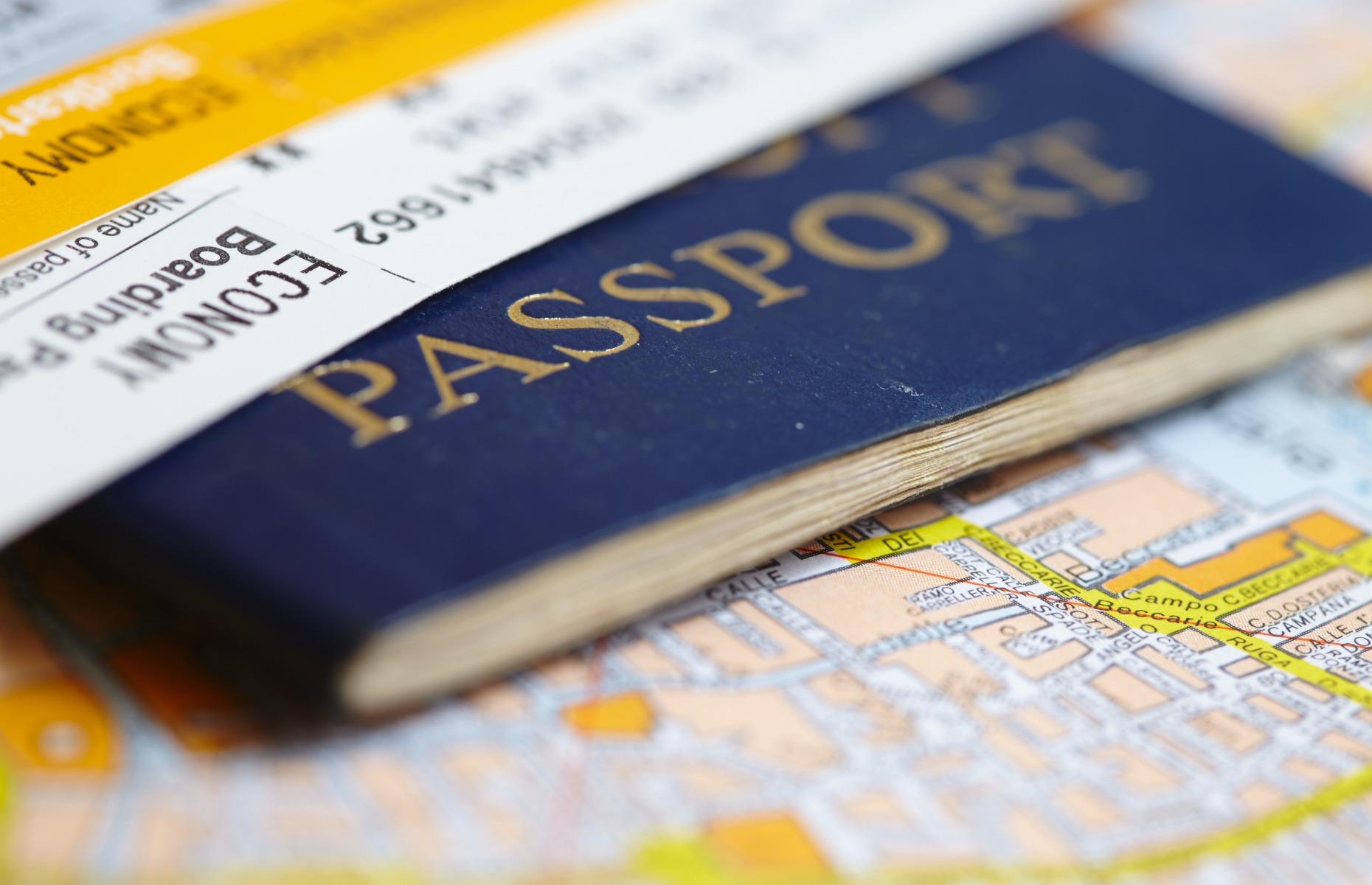
Check when your passport expires
When the UK ‘Brexited’ the EU, the rules on travel between the two estranged areas changed. Now, Brits traveling from home to the EU must have a passport valid for at least three months past their departure date.
The same can be said for nationals of other foreign countries too: Australians and Canadians traveling to Europe should have at least three months of validity left on their passports from the date they intend to leave the continent, while US citizens are advised to have no fewer than six months of passport validity past their last day in Europe.

What is the Schengen Area?
The Schengen Area is a coalition of 27 European countries that allow borderless travel between them. Travelers from several countries, including the UK and the US, do not need a visa to visit any Schengen nations and can travel freely in as many countries as they like for up to 90 days within a 180-day period.
While you wait for your Schengen Area travel allowance to refresh, you can also travel in the non-Schengen countries of Bulgaria, Cyprus, and Romania for 90 days within a 180-day window visa-free.
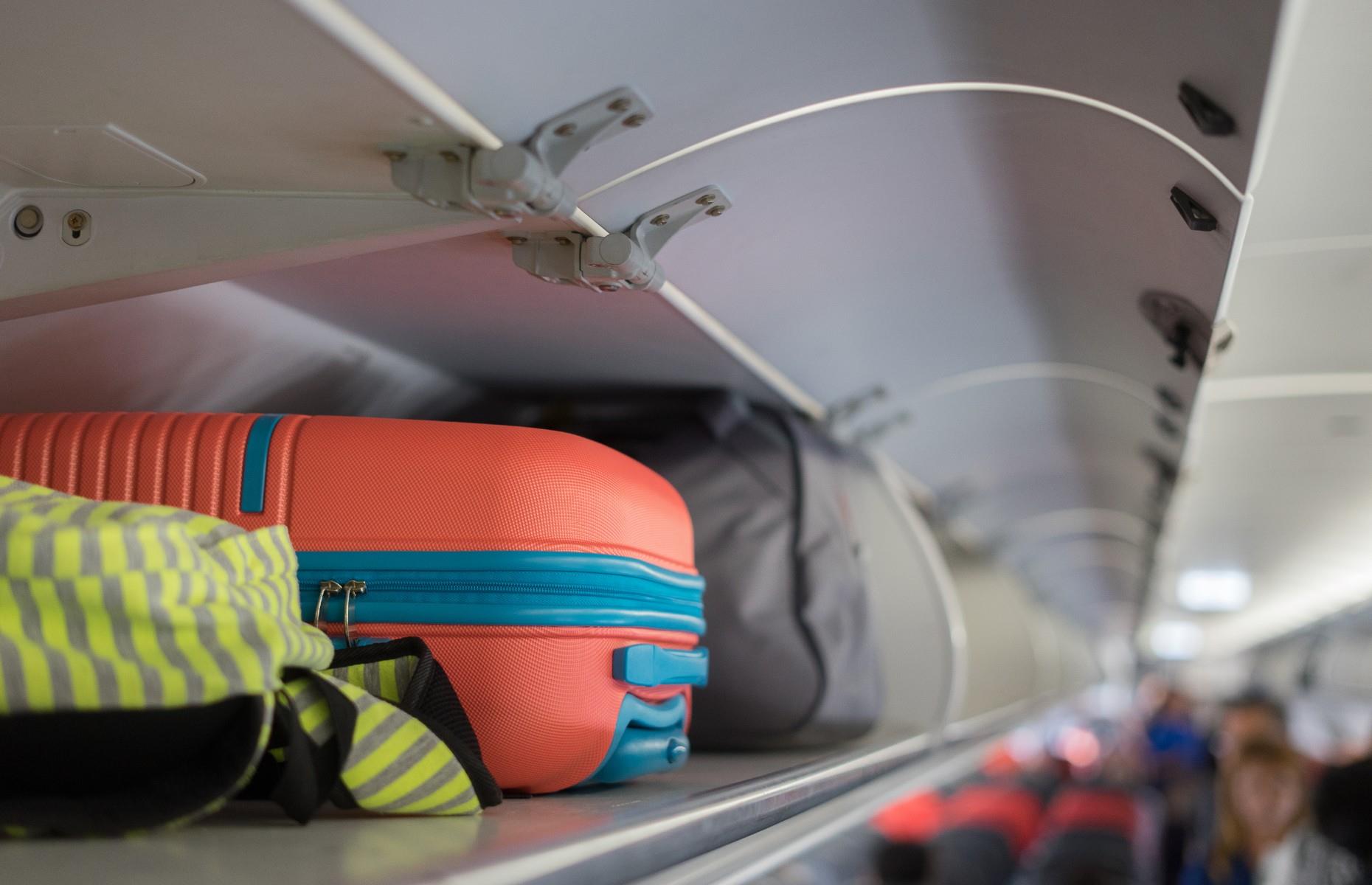
Hand luggage only? One size doesn’t fit all
Frustratingly there is no standard allowance across all airlines when it comes to the size and weight of cabin baggage, which regularly slaps unsuspecting travellers with unwanted extra charges. Your free hand luggage allowance will also vary from carrier to carrier.
British Airways is the most generous – you can bring one 56x45x25cm bag and one 40x30x15cm bag into the cabin with you, whereas budget airlines like Ryanair, easyJet, and Wizz Air are much more stingy. The EU is ultimately looking at eliminating carry-on baggage fees but until then, be sure to do your research.

Trains and buses are (mostly) the best ways to get around
You can avoid a lot of the hand luggage drama entirely by traveling through Europe, as opposed to over it. Overland adventures on the continent have never been easier to plan, with many countries (eg Germany and Spain) implementing affordable ticket schemes for those choosing to travel more sustainably.
Luxembourg’s public transport network has been completely free to use since 2020, while France banned domestic flights in 2023 where the same journey could be completed by train in less than two and a half hours. On the flip side, the UK’s public transport system is notoriously overpriced.

You sometimes need to validate your tickets
Italy has very strict rules about the need for regional train and local bus tickets to be validated before use – and there’s a hefty fine to pay if you don’t. While Trenitalia’s high-speed and intercity trains are ticketless, you’ll need to get physical regional tickets and rail passes date-stamped before departure by the ticket office or a machine like the one pictured here; e-tickets can be validated online.
Ticket validation is gradually being phased out in France, but is still required in some regions. So if you see a ticket-validating machine, use it.

Bring a universal plug adaptor
Don’t get caught out by thinking there’s just one standard kind of power socket for the whole continent. While most countries in mainland Europe have C and F-type sockets, G sockets are more common in the UK, Ireland, the Channel Islands, Cyprus, Gibraltar, and Malta.
Venture north to Denmark and its territories and you could encounter E or K-type sockets. To avoid any inconveniences in your destination, pack a universal adaptor that allows you to hook up USB cables and switch plug types with the press of a button.

Save on your phone usage
If you’re lucky, your cell’s network provider might allow you to use your calls, texts, and data throughout Europe as part of your existing plan. If that’s not the case, consider investing in a data-roaming add-on that could save you money if you travel regularly – purchasing packages as you go can often work out more expensive for less allowance. Otherwise, prepaid SIM cards designed for travelers also cover multiple countries for days and even months at a time.

Carry a bit of cash
Yes, even in today’s mostly cashless society, sometimes cash is king. While it can feel cumbersome and unhygienic to cart around, it’s better to have a safety net of notes and loose change in your bag than running into trouble if the card machine isn’t working in the cafe you’re eating in or if, heaven forbid, you were to lose your bank card or cellphone.
Just remember to keep your money safe, secured, and concealed at all times.

Always pay in the local currency
If you’re withdrawing cash from a European ATM or paying for something on your card while on the continent, always pay in the local currency rather than your own. This will ensure you’re not being fleeced by bad conversion rates that could cost you up to 10% more than if you’d opted for the local legal tender when prompted. Banks like Revolut, Monzo, and Starling offer some of the best exchange rates on the market when using their payment cards or apps abroad.
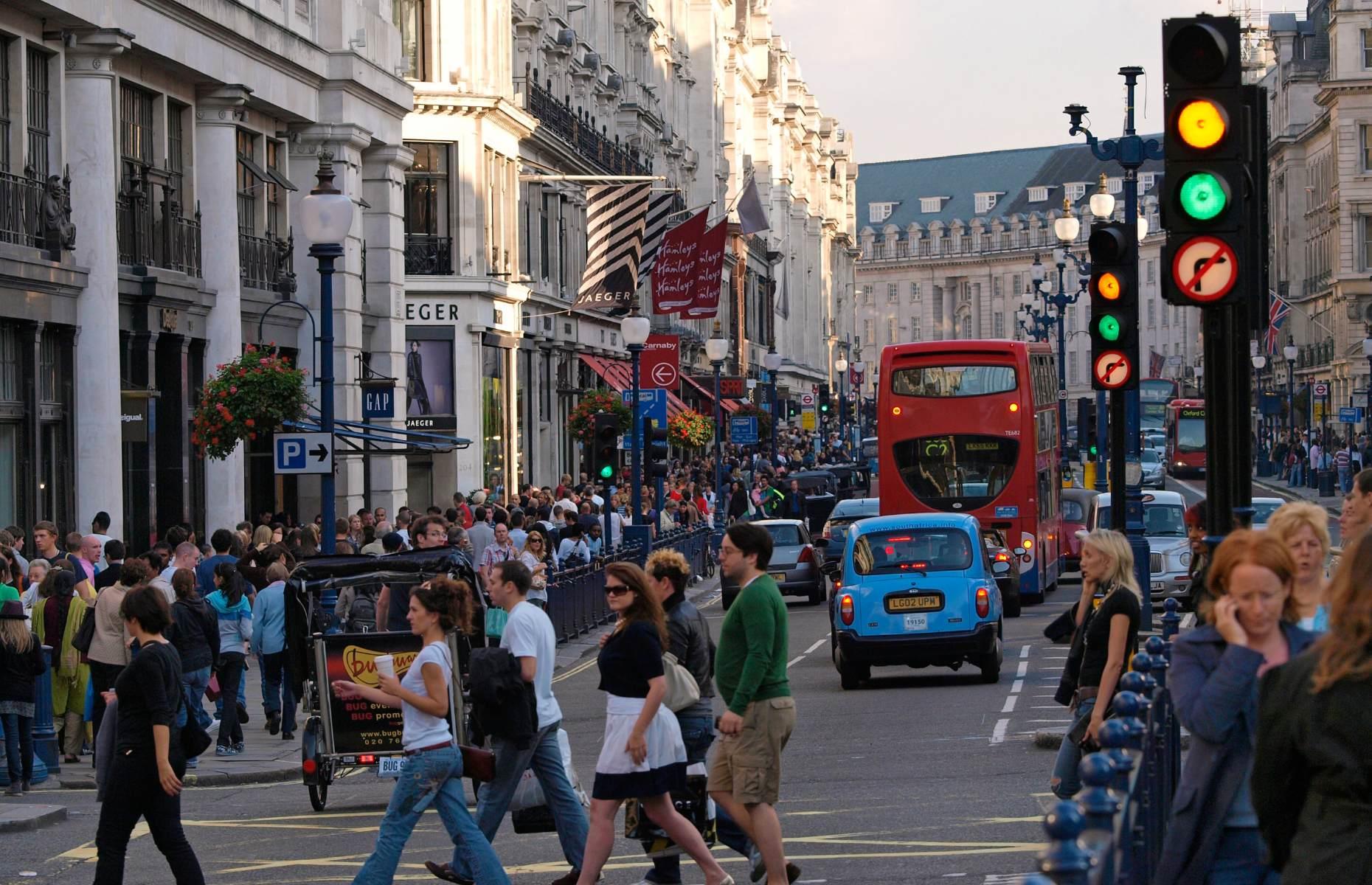
Expect crowds even in the off-season
Even if you’re visiting a European destination between November and March – deemed the off-season – it’s likely that city streets and Insta-famous tourist attractions may still be busier than you might expect. The cooler temperatures, wetter weather and shorter days might be enough to dissuade some people from booking an off-season trip to places like Stockholm, Prague, Edinburgh or London, but you’ll be far from the only one braving it in the name of lower costs.

Avoid falling victim to visitor caps
Greece became the latest European country to impose visitor limits on one of its foremost attractions in 2023 when the Acropolis of Athens began capping the number of daily tourists at 20,000. To protect the longevity of the ancient UNESCO site and the comfort of everyone who wants to see it, visitors must book a one-hour entrance slot in advance.
Elsewhere, tourism caps have also been applied on hire cars touring Italy’s Amalfi Coast Drive at busy periods – if your number plate ends in an odd number, you can’t access the road on odd-numbered days, and vice versa.

Pack a comfy pair of walking shoes
It's amazing how quickly your pedometer will tick up while exploring Europe, without you even really having to think about it. Wandering cobbled medieval streets, coast paths, nature trails, and around sprawling museums, you'll surpass that 10,000 daily step count in no time. Be sure then to pack your favorite pair of sneakers or most sturdy hiking boots – shoes that aren't just supportive but breathable, to avoid unwanted travel buddies like blisters and ingrown toenails.

There are countries where your budget will go further
While the term ‘cheap’ is subjective, we think most will agree that paying less than a euro for an espresso is an absolute steal – and almost unheard of. But that's the going rate in Bulgaria, an oft-overlooked nation at the confluence of the Black Sea and the Balkan Peninsula's highest peaks.
Its neighbor Romania is also touted as one of Europe's more affordable destinations, as well as the likes of Estonia, Poland, and Czechia.

Sleeping under the stars isn’t a given
If you’re planning to save money on accommodation by wild camping your way around Europe, you should know that pitching your tent is subject to different rules in different countries and often involves a lot of red tape. In the UK for instance, wild camping is illegal without the landowner’s consent almost everywhere, apart from the majority of Scotland and Dartmoor National Park in England’s southwest. Sweden, Norway, and Finland have right-to-roam laws that allow camping freely in nature, provided you leave no trace.

These are the countries most supportive of the LGBTQ+ community
Though attitudes towards the LGBTQ+ community have become more accepting in recent years across the continent, there are countries that are considerably more inclusive and celebratory than others. At the time of writing, ILGA-Europe (the European Region of the International Lesbian, Gay, Bisexual, Trans, and Intersex Association) ranked Malta, Belgium, Denmark, Spain, and Iceland as the top five European countries where people of all sexualities and gender identities should feel safe.
At the bottom of the table, Armenia, Turkey, and Azerbaijan rank lowest for LGBTQ+ tolerance.

These are some of Europe’s most accessible cities
Persons with disabilities, elderly people, and families with children all might need to consider the accessibility of a city before visiting. And looking at those that have placed either first, second, or third in the Access City Award is a good starting point: Stockholm, Lyon, Berlin, Warsaw, Milan, Luxembourg (pictured), Ljubljana, Rotterdam, and Salzburg have all been recognized in the past.
If you require elevators or ramps to get around, you might want to skip London – only 92 Tube stations out of the 272 in the metro network provide step-free access from street to platform.

Table for one?
If there's one thing solo travelers universally dread, it's dining alone. In reality, no one bats an eye when you say “mesa para uno,” but what if you can’t even get a table in the first place? In August 2023, Lonely Planet reported that solo diners were being denied seats at restaurants with outdoor terraces in Barcelona, with larger groups taking priority.
But worry not, there are plenty of amazing restaurants that do welcome solo customers, such as BENZiNA in the lively Sant Antoni neighborhood. Wherever you travel solo in Europe, it's worth noting that some restaurants won't take reservations for one, so prepare to be flexible.

Businesses might shut down for certain days and siestas
Looking to eat out when you're traveling around Europe? You might find it easier to make a reservation on some days than others. While not all restaurants shut down on Sundays and Mondays as a rule, you might notice that many do. So leave yourself enough time in the planning process to account for a bit of extra research.
Shops will often close early (if not completely) on Sundays too, while in typically warmer countries like Spain, Italy, and Greece, businesses may also pause operations during afternoon siesta time, especially in more rural communities.

Know when you’re not wanted
Overtourism has become a major blight in some of Europe’s cities, whose fatal flaw is their aesthetic beauty and party-loving nightlife districts. But enough is enough, says Amsterdam, which will increase its tourist tax in 2024 in line with restrictions the city recently placed on cruise ships.
The hike will mean Amsterdam breaking its own record for the highest tourist tax in Europe – maybe even the world. Spanish destinations like Seville, Mallorca, and Barcelona are also clamping down on rowdy visitors eliciting antisocial behavior.

You can’t even eat ice cream on this Italian beach
Italy is one of the more vocal countries when it comes to making rules to deter irresponsible tourism and pollution. In the summer of 2023, it was reported that beachgoers at Sant’Antioco in Sardinia could be slapped with a €500 ($546) fine for eating food of any kind on the beach.
Milan has also recently been cracking down on eating, banning late-night/early-morning takeout, while consuming food on the streets of Florence's historic center is also prohibited between set times. In Rome, tourists could be fined for sitting on the iconic Spanish Steps or wading in the Trevi Fountain.

Don’t bring wheelie suitcases to this historic city
Elsewhere, ‘Pearl of the Adriatic’ Dubrovnik is urging travelers to respect the city, having launched a tourism campaign in 2023 encouraging people to carry their suitcases through the ancient old town instead of raking them across the battered cobbles. This comes after UNESCO has previously threatened to strip Dubrovnik of its World Heritage Site status due to its problems with mass tourism.
While the word about wheeling suitcases through the city’s historic center isn’t a concrete ban, visitors should still be mindful of the impact they make on any destination they travel to.

There’s more than meets the eye
While Europe’s most talked-about places are popular for a reason and shouldn’t necessarily be dropped from your itinerary, there is far more to this little continent than what you see on social media. For instance, Scotland isn’t all just moody castles and rugged highlands – it has Caribbean-like beaches, like the one pictured here on the Isle of Harris.
You’ll be vastly rewarded for venturing beyond Croatia’s Dalmatian Coast and Iceland’s Golden Circle, and considering the countries you don’t see documented as much, such as Kosovo, Albania, and Lithuania.
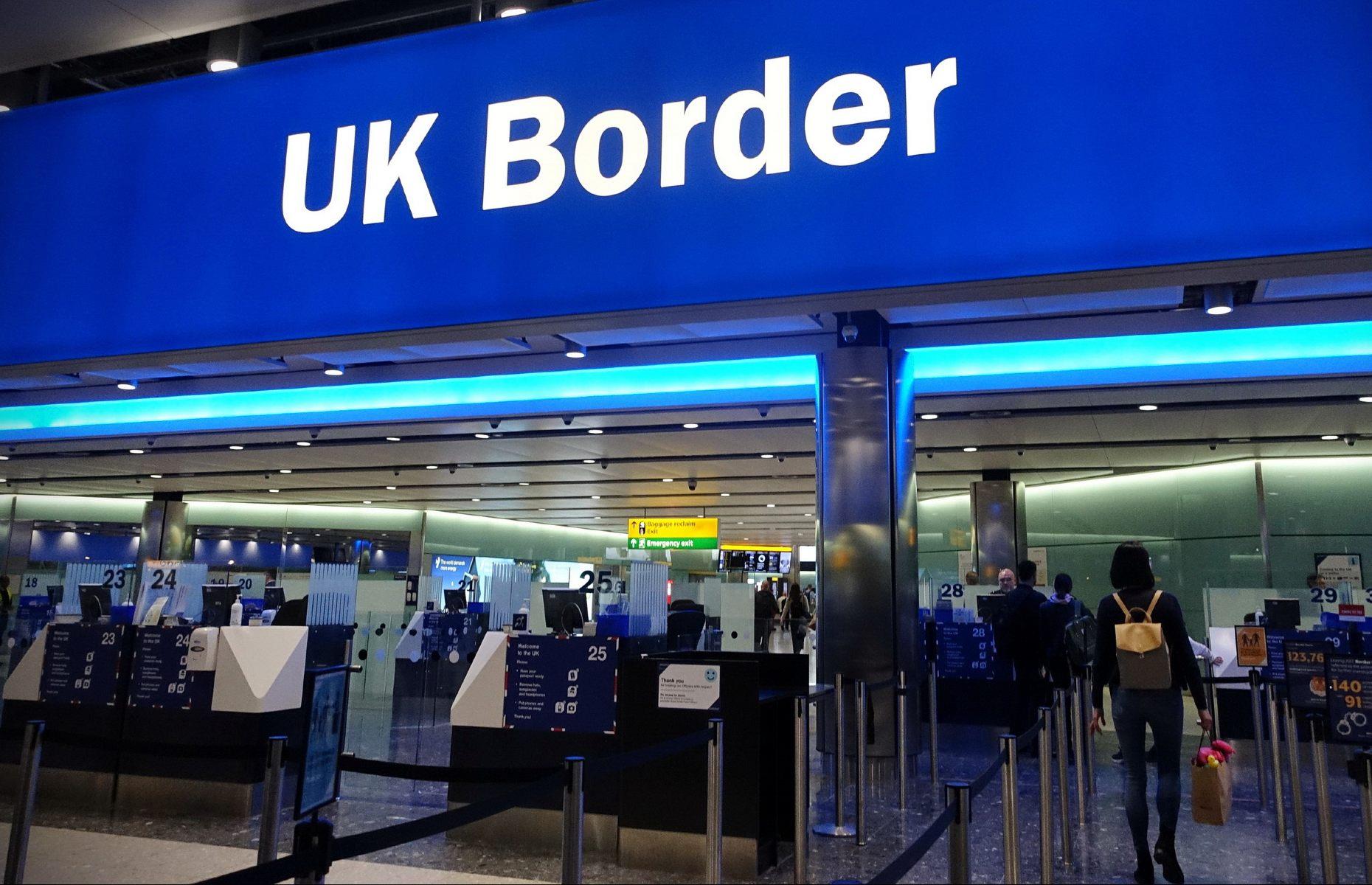
Visiting the UK is about to get more expensive
As part of ongoing plans to digitize its borders, the UK is introducing a new Electronic Travel Authorisation (ETA) document that will be required for visa-free international visitors to England, Scotland, Wales, and Northern Ireland. ETAs cost £10 ($13) and are already mandatory for Qatari passport holders, with Bahrain, Jordan, Kuwait, Oman, Saudi Arabia, and the UAE joining the scheme from February 2024.
More countries, including the 27 European Union member states, the USA, Canada, and Australia, are set to join later in 2024. More on the ETA process can be found in our detailed explainer .

You’ll soon need extra authorisation to visit other countries too
Visa-exempt international travelers to 30 other European countries will also need to apply for additional travel authorization within a couple of years. The ETIAS (European Travel Information and Authorisation System) scheme is similar to the UK’s ETA and will be required for nationals from these listed countries to visit all 27 countries in the Schengen Area, plus Bulgaria, Cyprus, and Romania.
The new visa waiver program is set to come into effect from spring 2025.
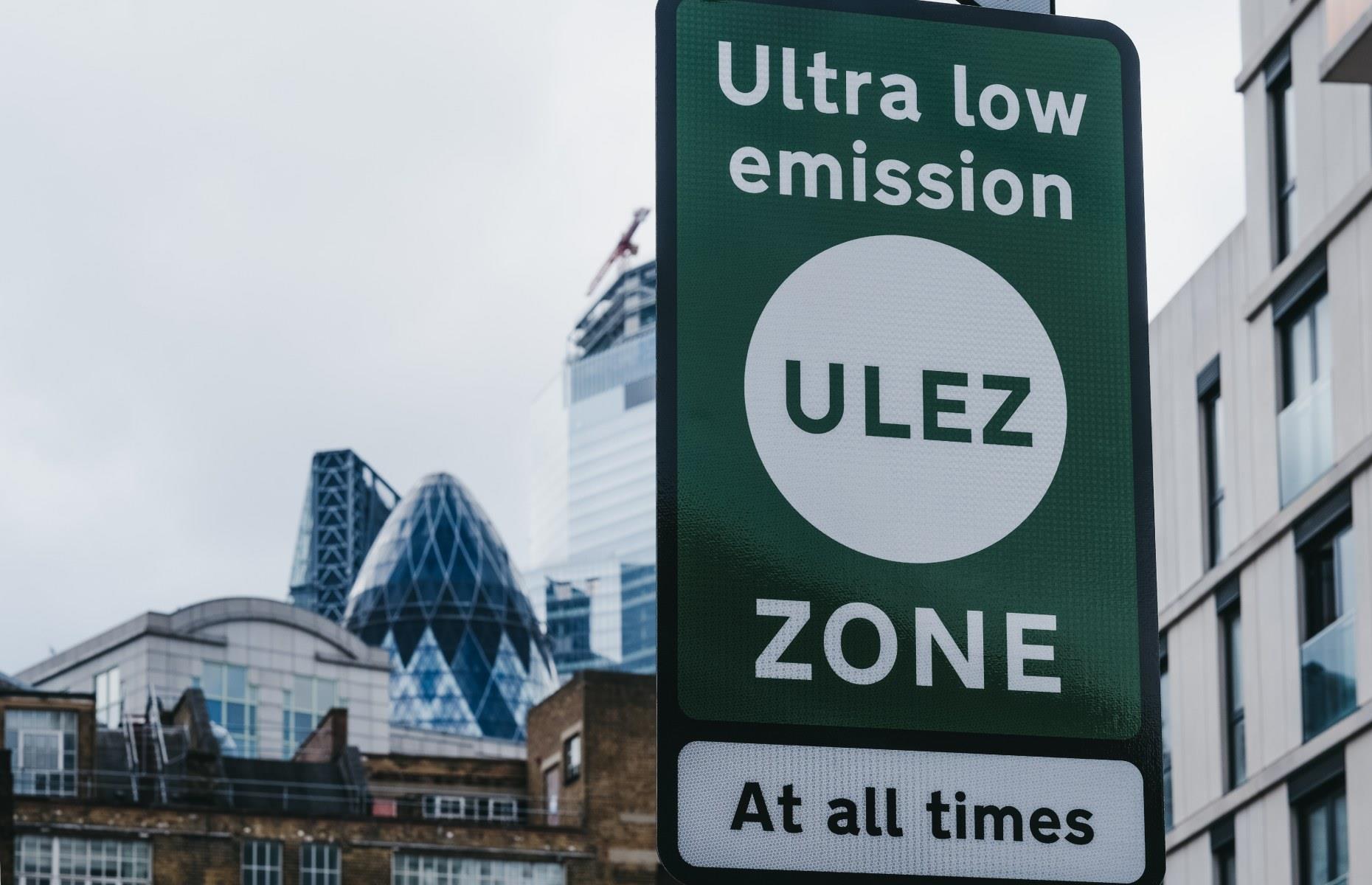
Dodge city centres if you’re planning a road trip
In a bid to reduce the continent’s carbon footprint, more and more low emissions zones are cropping up all over Europe and placing restrictions on petrol and diesel vehicles passing through major cities such as London, Paris, and Madrid. Not only does driving a car in these zones result in huge charges to compensate for the environmental impact of the journey, but it can also mean you’re stuck in traffic jams that eat into the enjoyment of your trip.
While hiring a car is required to visit more rural, remote, and coastal areas, you shouldn’t need one to get around cities.
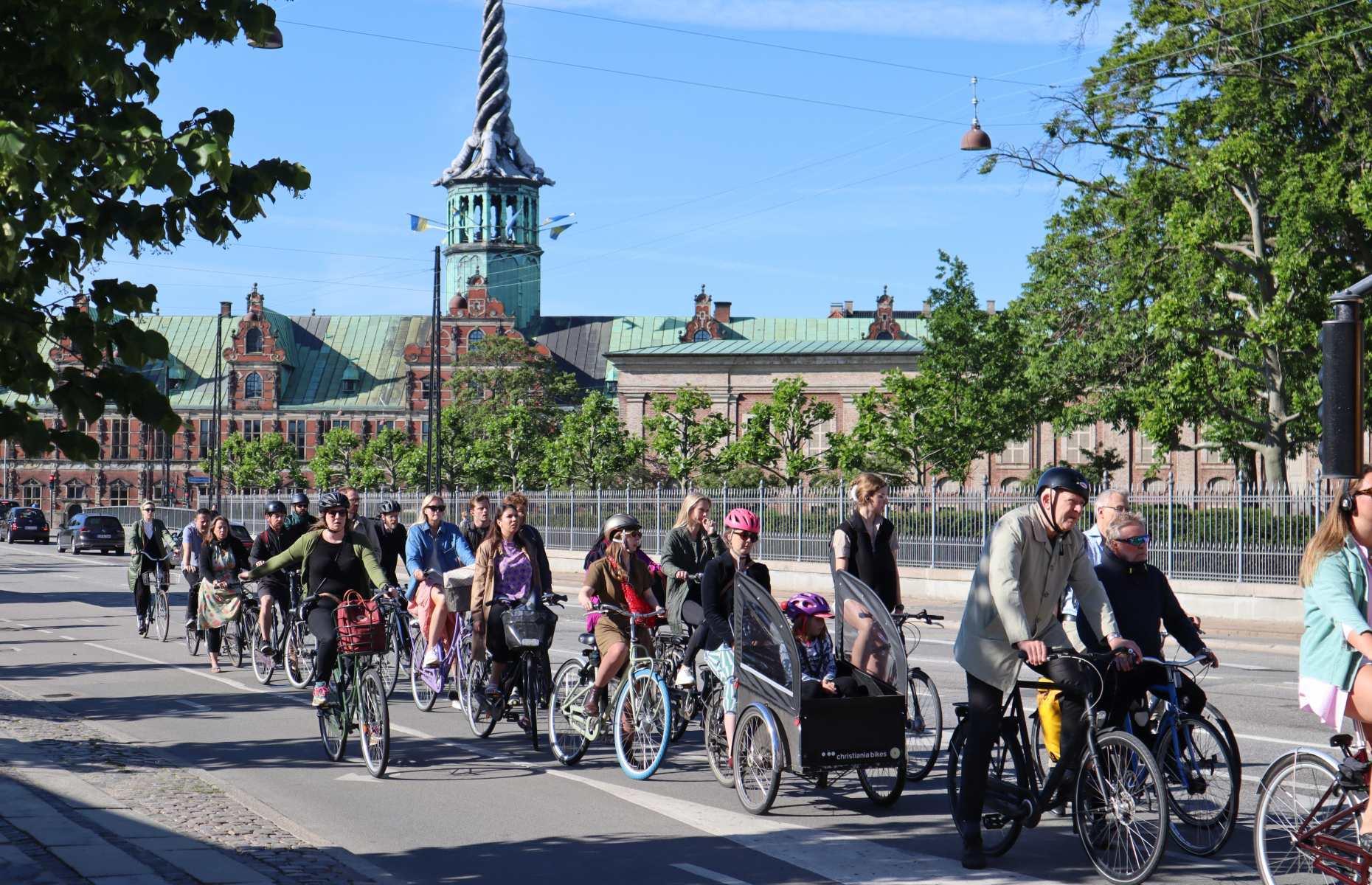
It’s not just Amsterdam that loves a bike
While the Dutch capital might be the poster-child for seeing the world on two wheels, it's not the only European city encouraging people to get on their bikes. Copenhagen (pictured) is another incredibly cycle-friendly city, where great bike bridges, explorative routes, designated lanes, and hire schemes have all been created.
If you are planning to cycle when you come to Europe, make sure to familiarise yourself with the road laws for cyclists in each of your destinations, as these can vary from country to country.

Should you really be worried about bedbugs?
Social media ran riot in October 2023 with fear-mongering reports of bedbugs infesting the Paris metro, hotels, and cinemas, sending Parisians and travelers into a panic about getting bitten and taking the little blighters home with them. But despite the frenzy, health officers and dermatologists have said that the French capital’s bedbug problem is no worse than in other cities around the world. So while they’re a nuisance, they shouldn’t put you off traveling.
Now discover the fascinating secrets of Europe's most eerie abandoned places,,,
More for You
Use this 2-word phrase when your boss asks you to do more work than you have time to do, according to a therapist
Fact Check: The Truth About Claims That Mark Wahlberg and Mel Gibson Are Launching 'Non-Woke' Film Studio
It was a popular national monument, until it was robbed to extinction
108 Sarcastic Quotes That Are the Perfect Mix of Witty and Clever
7 Things To Know If You Withdraw More Than $10,000 From Your Checking Account
GPS disabled as Israel raises alert over Iran threat
Why I started using this blunt cover letter after applying to more than 1,200 jobs and rarely hearing back
Chick-fil-A Is Testing an All-New Chicken Sandwich
Trump’s $175m fraud bond thrown into doubt as New York attorney general questions insurer
32 Untold "Harry Potter" Behind-The-Scenes Secrets And Stories I Never Knew About The Movies
20 Personal Things You Should Never Share With Others
Ukraine Rues Missed F-16 Opportunity
I'm a former Google recruiter. The smartest job candidates always did these 5 things to stand out.
Biden Changes Course On A Major Power Grid Rule After Backlash
Experts and editors swear by these shampoos for thinning hair, starting at $8
Aldi’s New Colorful Glassware Set Is the Best Williams-Sonoma Copycat We’ve Seen Yet
Over 150 Jewish creatives sign open letter defending Jonathan Glazer for Oscars speech on Gaza
Donald Trump Stung by Two Court Losses in One Day
17 Well-Paid Remote Jobs You Can Do at Night
I study people with high emotional intelligence for a living—8 things they never ever do when talking to others
New requirements for Americans traveling to Europe postponed until 2025
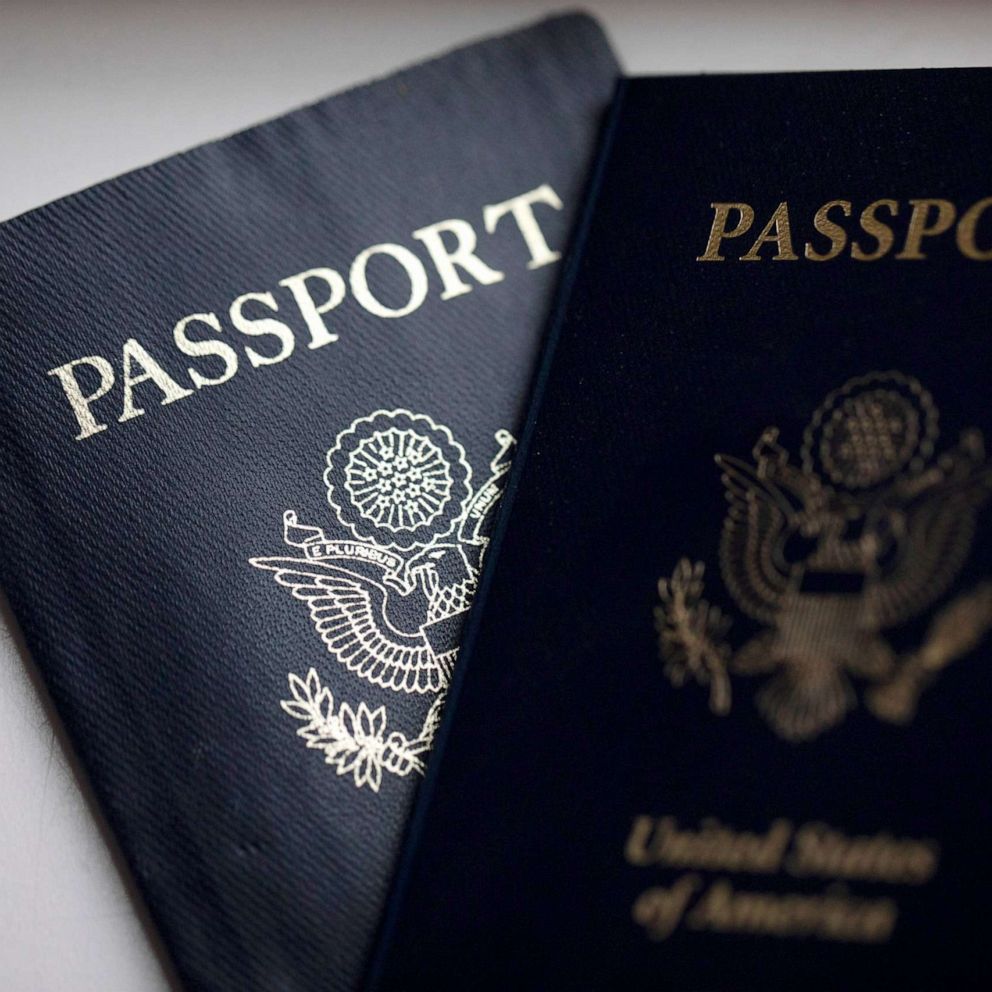
Americans eyed upcoming travel to European destinations slightly differently due to news of a requirement that was set to start in 2024 for U.S. passport holders. But now, EU officials have postponed the European Travel Information and Authorisation System ( ETIAS ) launch until spring of 2025.
SchengenVisaInfo.com, a website dedicated to the world's largest visa-free zone where 27 European countries abolished their internal borders known as the Schengen Area, first reported that an EU official confirmed ETIAS won't go live until May 2025, "due to continued delays with the introduction of the related Entry-Exit System (EES), which needs to be operational before ETIAS can be implemented."
An official for the European Union did not immediately respond to ABC News' request for comment.
What to know about ETIAS for US travelers
If you previously traveled to Europe without a visa, you will now need to apply for authorization through the ETIAS , before visiting.

Today, American travelers have visa-free access to 184 global destinations, according to the Henley Passport Index . And while the U.S. passport is currently ranked eighth-most powerful passport to own, that could be set to shift when the European Union adds its new documentation requirements for U.S. visitors.
The application form, which will be available on the official ETIAS website as well as a mobile application, has a fee of 7 euros or $7.79 U.S. dollars. All communication is done by email.
Once you are approved for travel, the authorization entitles visitors to stay in European countries that require ETIAS for up to 90 days within any 180-day period and travelers must be in possession of a valid ETIAS during their entire stay.
MORE: New warning issued for rebooking air travel after delays, cancellations
According to ETIAS, most applications should be processed within minutes, but in case an application takes longer, decisions will be sent within four days or up to 14 days if the applicant is asked to provide additional documentation.
The European Union encourages travelers to apply for an ETIAS authorization "well in advance of your planned journey."
Confirmation of application submission will be sent on email with a unique number that is needed for future reference.
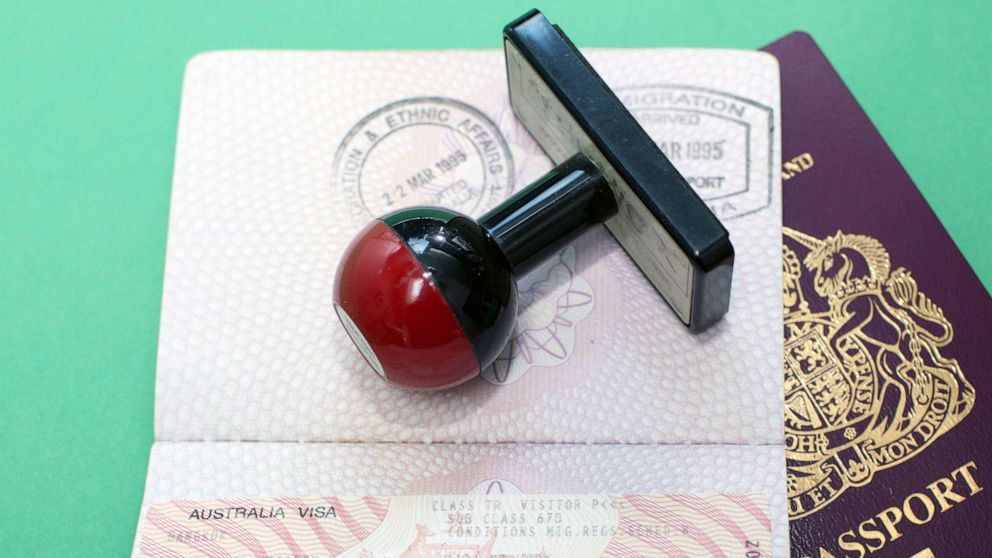
Upon receiving ETIAS travel authorization, travelers are to ensure that their name, passport number and other information is correct because any mistake will prevent them from crossing the border.
If an application is refused, the email will include the reasons for the decision along with information about how to appeal.
ETIAS travel authorization is valid for three years, according to the EU, or until the travel document you used in your application expires, whichever comes first.
MORE: European heat wave breaking records with little relief in sight
The ETIAS authorization is linked to a person's travel document -- such as a U.S. passport -- and both documents will be needed to board a flight, bus or ship to enter any of the European countries that require ETIAS.
Similar to international border requirements with a passport, the ETIAS authorization doesn't guarantee automatic right of entry. "Border guards will verify that you meet the entry conditions" and anyone who does not meet the conditions "will be refused entry," according to the EU.
Click here to learn more about the process from the European Union.
An earlier version of this story was originally published on July 21, 2023.
Related Topics
Up next in travel—.
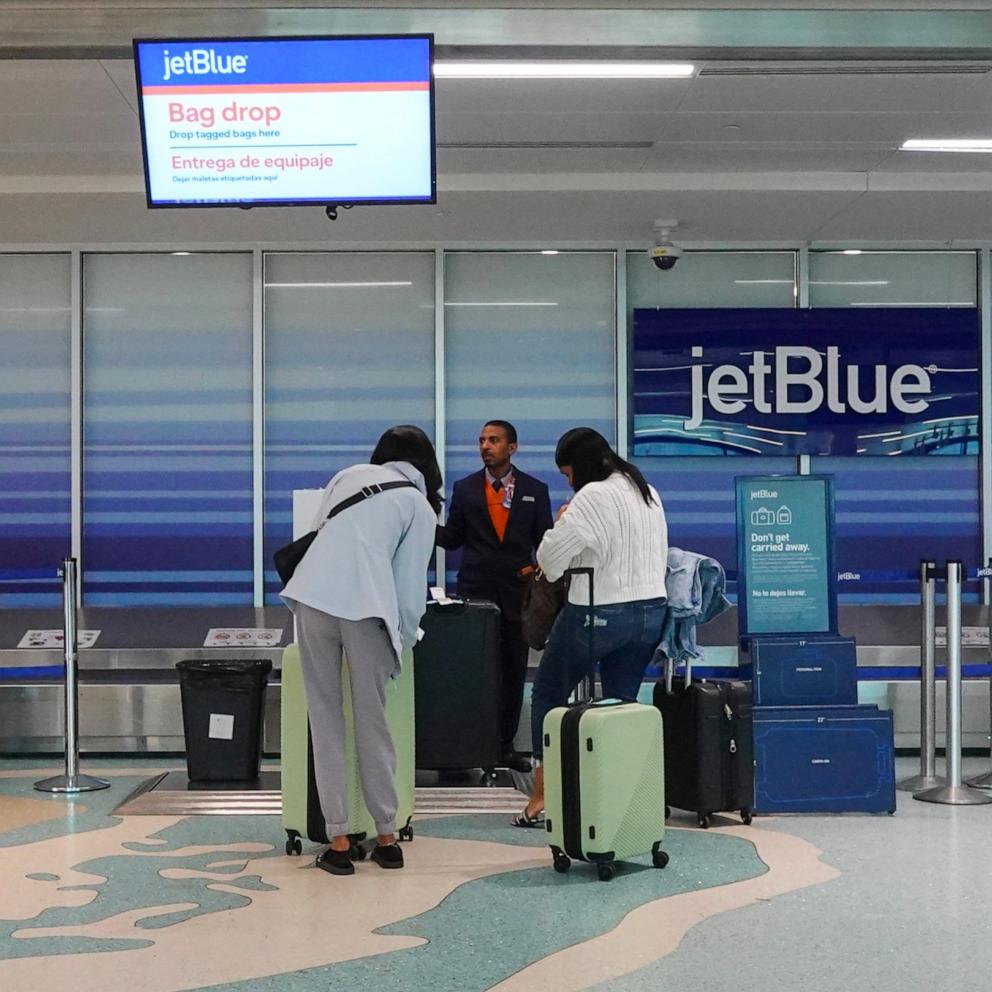
What to know about JetBlue checked bag pricing, increased fees for Trusted Traveler Programs

King Charles III opens parts of Buckingham Palace, Balmoral Castle for 1st time

How these cruise passengers missed boarding, got stranded in Africa

Southwest red-eye flights still in pipeline, don't bank on overnight travel this year
Shop editors picks, sponsored content by taboola.
Travel to these U.S. cities with European flair

A trip across the pond has many things to offer, like landmarks, history, food, art and museums. However, the No. 1 reason people don’t go on vacation is the cost.
Being strapped for cash shouldn’t deny you the luxuries of experiencing European culture.
Here are five cities that have a European feel without the long flight.
New Orleans
Highly influenced by French and Spanish ways of life, New Orleans is a melting pot of cultures with a rich history. It was settled by the French and turned over to the Spaniards to settle a war debt. Spain ruled from 1763 to 1803. The city has boisterous music, authentic cuisine, art and museums to explore.
Tarpon Springs, Fla.
Tarpon Springs has the look and feel of Greece; according to Tarpon Arts, it has the highest concentration of Greek Americans in the country. These residents contribute their culture, food, clothing, experiences and more to the city.
Montpelier, Vermont
Montpelier is the smallest state capital in the U.S., with a population of just more than 7,000 people. The connection between America and France is on display, giving the quaint town the feel of a French countryside village with shops, green hills, farmers markets, European architecture and more.
Holland, Mich.
When given a name like Holland, you have to live up to your namesake. This little city in Michigan is dressed with cobblestone streets much like the ones in Europe and nostalgic countryside architecture. The city has authentic Dutch windmills, beaches, food and art — giving the perfect balance of a European, beach and small-town feel.
Solvang, Calif.
After being settled by the Spanish, a small population of Danish people came to Solvang . The city which is not far from Santa Barbra, has transformed into a Danish haven. In the Santa Ynez Valley, Solvang is cultured in its European roots and brings its residents and visitors authentic bakeries, eateries, museums, art and more.
Experiencing European culture doesn’t have to break the bank. Until you can save money for a trip overseas, taking a small vacation in the U.S. is the perfect substitute.
Related Stories
Advertisement
Supported by
Europe Reopened to Americans. Why, It Asks, Hasn’t the U.S. Reciprocated?
America’s borders remain closed to most European travelers during the pandemic, even those fully vaccinated. With fears of the Delta variant raging, there appears to be no end in sight.
- Share full article

By Nicholas Casey
MADRID — He was vaccinated in April, tested negative for the coronavirus and believed he was exempt from travel restrictions .
But on a stopover in Amsterdam in late May, Peter Fuchs, 87, was told he could not board his New York-bound flight to attend his great-granddaughter’s christening. The reason: As a European citizen, he was not allowed to enter the United States.
“I felt helpless and broken down,” Mr. Fuchs said in an email from his nursing home apartment in Hanover, Germany .
In June, as the United States made headway in its vaccination campaign, European Union leaders recommended that member countries reopen their borders to Americans, a significant gesture meant to signal what they hoped would be the beginning of the pandemic’s end. They expected to be repaid in kind.
But nearly two months later, even as Europe has overtaken the United States in vaccinations , America’s borders remain closed to most European travelers , even ones with vaccinations. And with fears of the Delta variant of the virus raging, there appears to be no end in sight.
That the United States remains largely closed has dismayed Europeans and frustrated their leaders, who are demanding that Europe’s decision to open its borders be reciprocated.
“We insist comparable rules be applied to arrivals in both directions,” Ursula von der Leyen, the president of the European Commission, the bloc’s executive arm, said last week at a news conference. Officials with the bloc have even suggested reimposing travel restrictions against American travelers, though a quick change is not expected since many countries are reluctant to risk further ruin to summer tourism.
For some European families, the continued ban has compounded one of the deepest sorrows of the pandemic — separation itself — as loved ones become ill across closed borders and family elders grow fearful they may never see their loved ones again.
Unmarried partners with different passports have struggled to keep relationships afloat, giving rise to the popular Twitter hashtag #loveisnottourism . Europeans offered jobs in the United States still do not know whether they should accept them.
“Now that we have vaccines, at least let the vaccinated people come,” said Michele Kastelein, a dual French-American citizen living in Portola Valley, Calif. Her French brother Maurice had to abandon plans to attend her son’s wedding this month, despite hopes that the ban would be lifted by now for Europeans like him who are vaccinated.
The European travel ban dates to the start of the pandemic. President Donald J. Trump removed the restrictions in the final days of his term, but President Biden reinstated them shortly after taking office.
The White House, however, has offered little explanation on why the restrictions remain — even though some countries with higher infection and lower vaccination rates face no similar ban. At a news conference last week, Jen Psaki, the White House spokeswoman, cited the advice of medical experts and continued concerns about the Delta variant.
Under the current rules, virtually all residents of Europe’s Schengen Area — the passport-free zone that includes 26 countries plus other entities — as well as those living in Britain and Ireland are still barred from traveling to the United States.
Five other countries under the ban include ones with high infection rates, like Iran, South Africa, Brazil and India, but also China, where rates of spread have been far lower than those in the United States for months.
The travel ban exempts some people, among them American citizens, permanent U.S. residents and some family members of U.S. citizens, provided the American is under 21.
People from the prohibited countries can still enter the United States if they spend the 14 days before their arrival in a country that is not on the Centers for Disease Control and Prevention’s list .
This last proviso led Shelley Murray, an American strength and conditioning coach, and her partner, Viktor Pesta, a mixed martial arts athlete from the Czech Republic, into an odyssey that spanned not just their native countries, but also Turkey and the Dominican Republic.
The two had moved into a home in Fort Lauderdale, Fla., shortly before the pandemic when Mr. Pesta was called to a coaching assignment in the Czech Republic. The European Union and the United States banned travel in both directions soon after, and the two were separated for six months, Ms. Murray said.
She was the first to leave her country, last August, after the Czech Republic created a so-called sweetheart exception that allowed Americans to visit unwed partners. But when Mr. Pesta wanted to return to the United States last October, he had to spend two weeks in Turkey — a country not on the C.D.C.’s prohibited list — so he would be allowed to enter.
This spring, shortly after Mr. Pesta was vaccinated in the United States, he traveled back to the Czech Republic for a mixed martial arts fight. When he wished to return to Florida this summer, the couple went to the Dominican Republic to allow for Mr. Pesta’s re-entry, a visit that stretched on for seven weeks because of visa delays.
Ms. Murray said her chief frustration was that American rules led the couple to stay in countries where infection rates were higher than in much of Europe, supposedly as a precaution against infected travelers.
“It was kind of nonsensical to us,” she said.
In another part of Fort Lauderdale sits the empty two-bedroom apartment of Elisabeth Haselbach, a Swiss citizen who bought it four years ago as an investment and vacation property.
But Ms. Haselbach has not been able to see her home since before the pandemic. She continues to pay taxes and condominium fees, but is worried because she has been unable to reinforce her home for the hurricane season , which lasts from June through November.
She said the predicament left her stunned: She found Mr. Trump’s behavior on the international stage unreasonable, but she did not expect to think the same of Mr. Biden on the closed borders.
“I was the No. 1 fan of the Democrats,” she said.
Frustration with the ban led Marius Van Der Veeken, a retired finance professional in the Netherlands, to write to Mr. Biden, saying he wanted to see his family in Michigan.
Mr. Van Der Veeken, 64, and his wife, Anne-Mieke, 61, had just gotten to know their grandchildren, now 3 and 4, before the pandemic prevented travel. Having received the AstraZeneca vaccine in March, they had believed they would soon have a chance to see the children, along with their daughter and son-in-law. Instead, they continue to meet each Sunday by video call.
Their grandchildren recognize them — calling them Opa and Oma, grandpa and grandma in Dutch — but Mr. Van Der Veeken worries that long-distance calls are not enough and that he is losing precious years.
“It’s important now to be building a relationship with them,” he said. “My big argument is that the travel restrictions should make a difference between family connections and tourists.”
Mr. Fuchs, the retiree from Germany, had similar feelings when he was blocked from his flight in May to attend the christening of his great-granddaughter, his first.
His daughter Natascha Sabert, an American citizen, said she had been told mistakenly by U.S. consular officials that he was eligible to enter the country as her father. But when he reached the airport in Amsterdam, he was told that he did not qualify because his daughter was over 21.
Ms. Sabert worried that her father, who is hard of hearing, would not be able to make it back to Germany that night from Amsterdam. Airport officials told her there were no more flights to Hanover that day, she said.
“I said, ‘You can’t push him in a wheelchair somewhere in the airport in the corner and just leave him there,’” she recalled.
Eventually, Mr. Fuchs was put on a flight to Hamburg, where a relative helped him onto a train to Hanover.
The experience has left Ms. Sabert fearful of asking her father to try to make the trip again. But she also feels time is running out and wants the chance for the family to reunite.
“It’s about these last moments before we say goodbye,” she said.
Monika Pronczuk contributed reporting from Brussels.
Nicholas Casey is the Madrid bureau chief, covering Spain, Portugal and Morocco. He spent a decade as a foreign correspondent in Latin America and the Middle East and wrote about national politics during the 2020 U.S. presidential campaign. More about Nicholas Casey
Finland extends Russia border closure indefinitely

The Reuters Daily Briefing newsletter provides all the news you need to start your day. Sign up here.
Reporting by Essi Lehto in Helsinki, writing by Stine Jacobsen; editing by Terje Solsvik and Mark Heinrich
Our Standards: The Thomson Reuters Trust Principles. , opens new tab

Which EU member states have introduced temporary border checks?
The European Union is dealing with an increase in legal and illegal migrant arrivals, spurring some member countries to temporarily reintroduce border checks within what is normally a wide area of free movement - the Schengen zone.

A kamikaze drone hit a military facility belonging to the defence ministry of the separatist authorities in Moldova's breakaway Transdniestria region, the region's security ministry said on Friday.

IMAGES
VIDEO
COMMENTS
Jenny Kane/AP, FILE. Americans eyed upcoming travel to European destinations slightly differently due to news of a requirement that was set to start in 2024 for U.S. passport holders. But now, EU ...
System for registering non-EU nationals travelling for a short stay in 29 European countries. (starting in the second half of 2024) Go to EES website.
Starting in 2024, American passport holders traveling to 30 European countries will need to receive authorization to travel via the ETIAS, a long-awaited measure designed to prevent terrorism.
Earlier in September the European Union recommended that US visitors should be banned from nonessential travel to its member states due to rising Covid-19 cases in the States. The news has ...
On June 18, the European Union recommended lifting the ban on nonessential travel for visitors from the United States just in time for the summer season, which is crucial to the E.U.'s economy.
Travel restrictions are back in Europe for U.S. visitors, at least in some places. In removing the U.S. from a list of safe countries, the European Union opened the door to a new web of bans ...
The European Union's governing body removed the United States from its list of safe countries based on COVID-19 case rates. The U.S. was added to the list in June, opening Europe travel this ...
The list of restrictions for people traveling from the United States to Europe is growing as European Union members implement new rules amid the COVID-19 pandemic. EU countries including France ...
Since June, the United States has been on the European Union's safe list for travel, which cleared the way for American travelers to visit many E.U. member countries without quarantining.
CNN —. In non-pandemic summers, both continental Europe and the United Kingdom draw crowds of tourists from around the world. Last summer, they couldn't get there. This summer many should be ...
Switzerland. Türkiye. Ukraine. United Kingdom. Outermost Regions. Get inspired for your next trip to Europe. Plan your vacation to discover European culture, heritage, architecture, gastronomy and stunning landscapes.
Tourists, exchange students, and people visiting for business from certain countries, like the United States, can travel in the Schengen area for up to 90 days. The Schengen area includes most EU countries, except for Cyprus and Ireland. It also includes four non-EU countries: Iceland, Norway, Switzerland, and Liechtenstein.
Athens. #10 in Best Places to Visit in Europe for 2023-2024. Athens was made for history buffs and architecture aficionados thanks to its world-renowned landmarks like the Acropolis, home of the ...
The U.S. upped its travel warning to 'Level 4: Do Not Travel' for 14 European countries on 2 November: Austria, Belgium, Bulgaria, Croatia, Estonia, Greece, Ireland, Latvia, Lithuania, Norway ...
Tip 1: Plan Ahead and Research. To make the most of your trip to Europe, thorough planning and research are essential. Visa Schengen area Requirements: Check the visa entry requirements for the many countries you plan to visit Europe and ensure you have the necessary documentation well in advance. Travel Restrictions: Stay updated on any travel ...
New EU Travel Restrictions. On August 30, 2021, the European Union removed six nations from its safe travel list: United States. Israel. Kosovo. Lebanon. Montenegro. Macedonia. This removal ...
"European travelers may travel to the United States by air but they must provide a negative COVID-19 viral test taken within three calendar days of travel," Daniel R. Zim, of Zim Travel Law, PLLC told Law&Crime in an email. "This restriction applies to all airline passengers from Europe including US citizens and legal permanent residents ...
After all the pandemic-era regulations and international travel rules, get ready for one new requirement coming for travelers to Europe in 2023. The European Travel Information and Authorization System will introduce a mandatory registration and a 7 euro (about $7.50) fee for visitors to most European countries as of May 2023.
US passport holders will soon need ETIAS to travel to Europe. The European Travel Information and Authorisation System will be operational from 2025. ETIAS is the new travel permit for Americans and other visa-exempt non-EU citizens visiting European destinations such as France, Italy, and Spain.. U.S. nationals can continue to go to Europe visa-free for short stays by applying for ETIAS.
In June, the European Union officially recommended its member countries reopen their borders to American tourists after more than a year of tight restrictions. The United Kingdom also placed the ...
The Schengen Area is a coalition of 27 European countries that allow borderless travel between them. Travelers from several countries, including the UK and the US, do not need a visa to visit any ...
The European Union and various member nations began welcoming American tourists back to the continent in June 2021. However, the United States has yet to rescind a similar European travel ban.
Iberia business class to Madrid for 34,000 points. Star Alliance business class for 88,000 miles round-trip. Virgin Atlantic business class for 47,500 miles. Air France or KLM business class for ...
October 02, 2023, 6:29 am. Americans eyed upcoming travel to European destinations slightly differently due to news of a requirement that was set to start in 2024 for U.S. passport holders. But now, EU officials have postponed the European Travel Information and Authorisation System ( ETIAS) launch until spring of 2025.
Travel to these U.S. cities with European flair. Holland, Mich., has authentic Dutch windmills, beaches, food and art — giving the perfect balance of a European, beach and small-town feel ...
The European travel ban dates to the start of the pandemic. President Donald J. Trump removed the restrictions in the final days of his term, but President Biden reinstated them shortly after ...
Finland will indefinitely extend the closure of land border crossings with Russia and add several ports to a list where travel from its eastern neighbour is prohibited, the government said on ...
If your pet is traveling through (transiting) a country in the European Union (EU) on the way to a third, non-EU country, you will also need a transit health certificate for your pet for the EU. The transit health certificate will be the same as if your pet's final destination was the EU country. Use the information and steps above under ...